
Wow did we pack in a LOT today in western Turkey, and it was amazing! For me, this was right up there with the day we did the Colosseum last week in Rome.
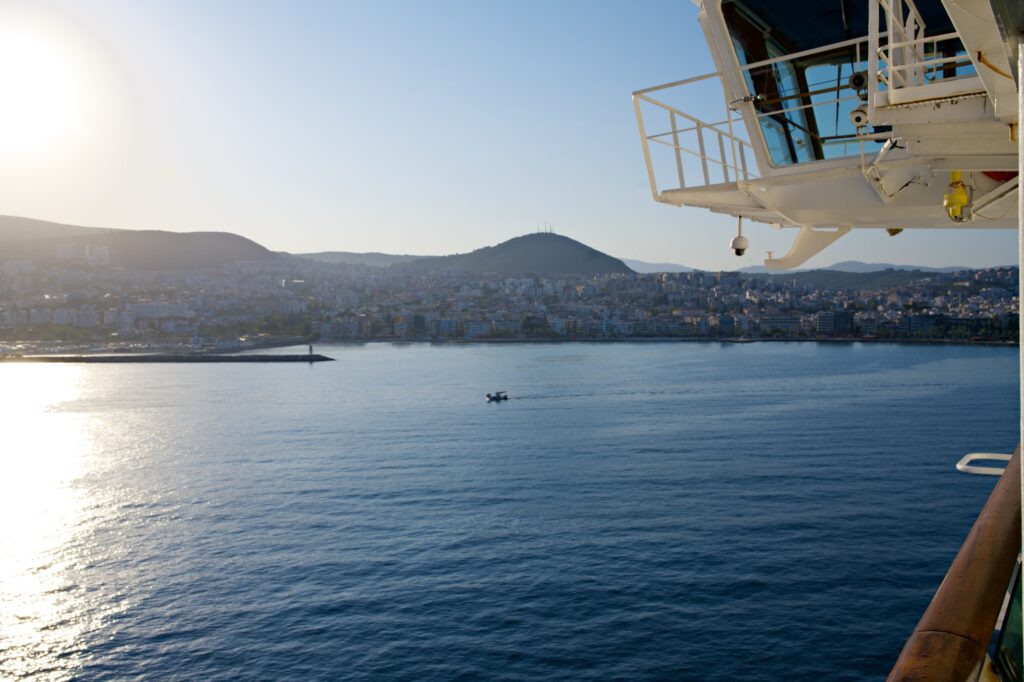
Our morning began just before 7:00 AM as we were sailing into the port at Kusadasi. I grabbed a few photos from our stateroom balcony as everyone was getting ready.
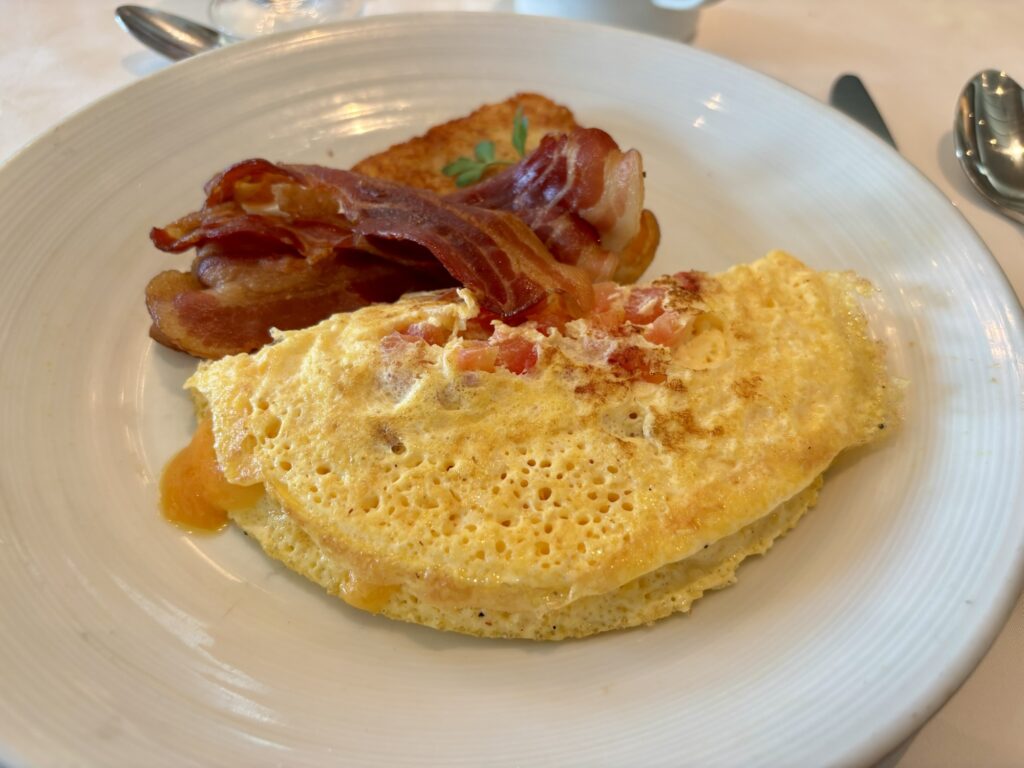
Since this was a little bit later arrival, we were able to eat breakfast in the Main Dining Room. I had a ham, cheese, and tomato omelette with bacon and a cinnamon roll. It was delicious as always.
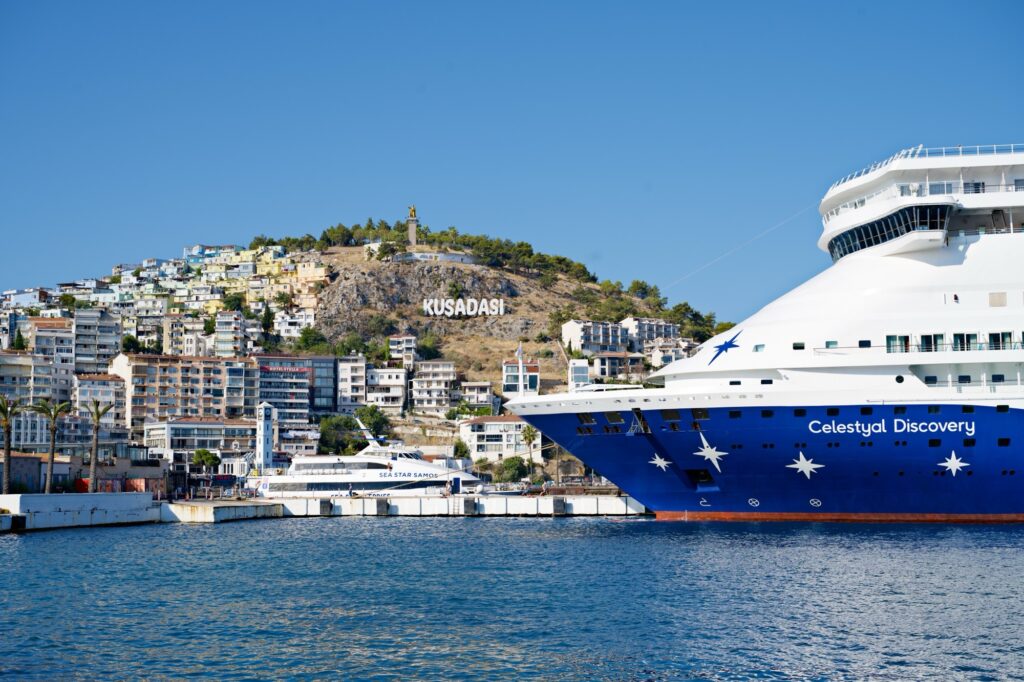
For our tour, we met in the Royal Theater on deck three and were assigned to group 23 for the day. After getting off the ship, we made our way through the port to board our bus for the day.
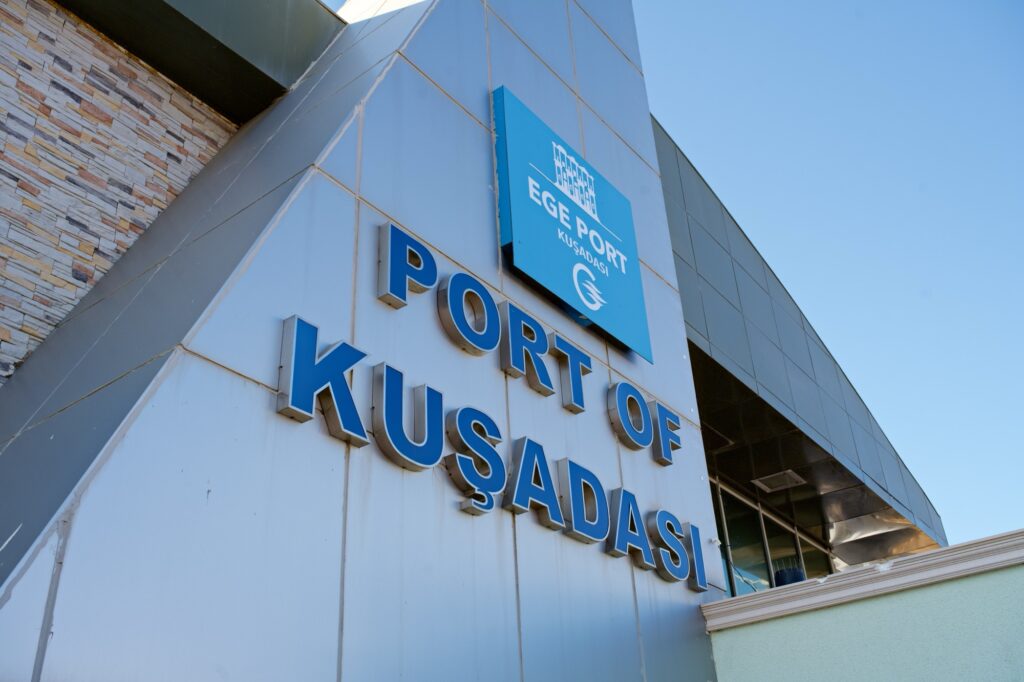
On a side note, it was a very hot day today with highs in the upper 90s. Probably the hottest day since we left Rome. It was nice to have an air conditioned bus in between sites.
Our tour today included the three archeological sites of Miletus, Magnesia, and Ephesus. Two of these are mentioned in the Bible (more on this later), and I was eager to visit both of them.
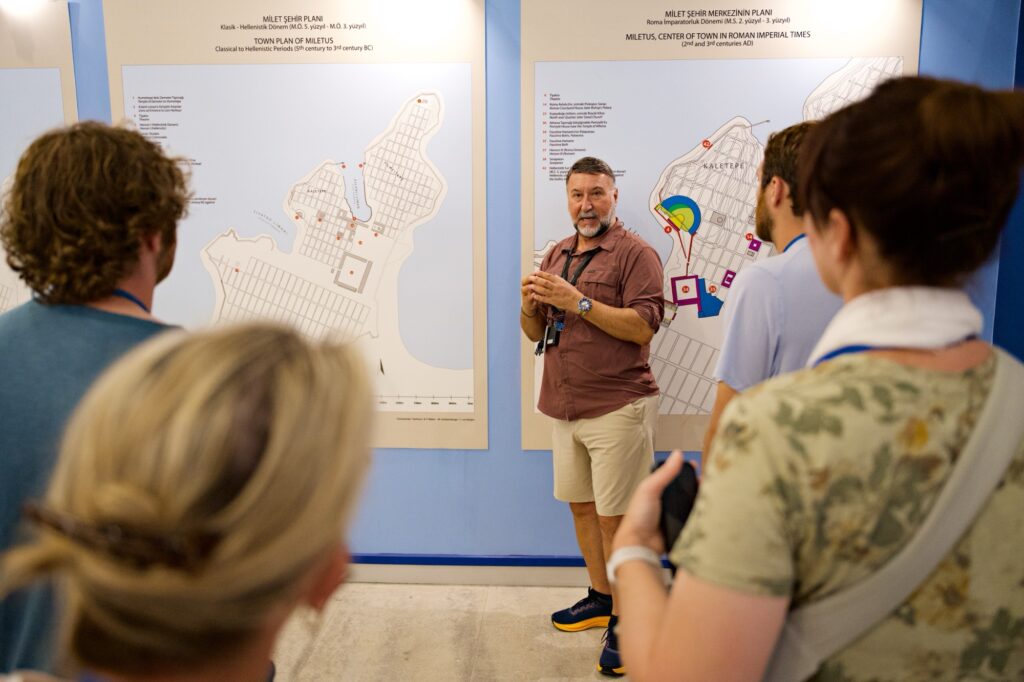
On our bus we met our guide Yusuf. He is originally from Smyrna (one of the seven churches of Asia to which the book of Revelation is addressed), and moved Kusadasi when he was nine years old. He said that he had spent a fair amount of time in the United States and had studied at Georgetown.
Yusuf explained that Kusadasi is a resort town and is the second largest port in Turkey after Istanbul with an average of 600 ships per year. It has a local population of 300,000 but grows to one million with tourists. The total population of Turkey is 85 million with 17 million in Istanbul.
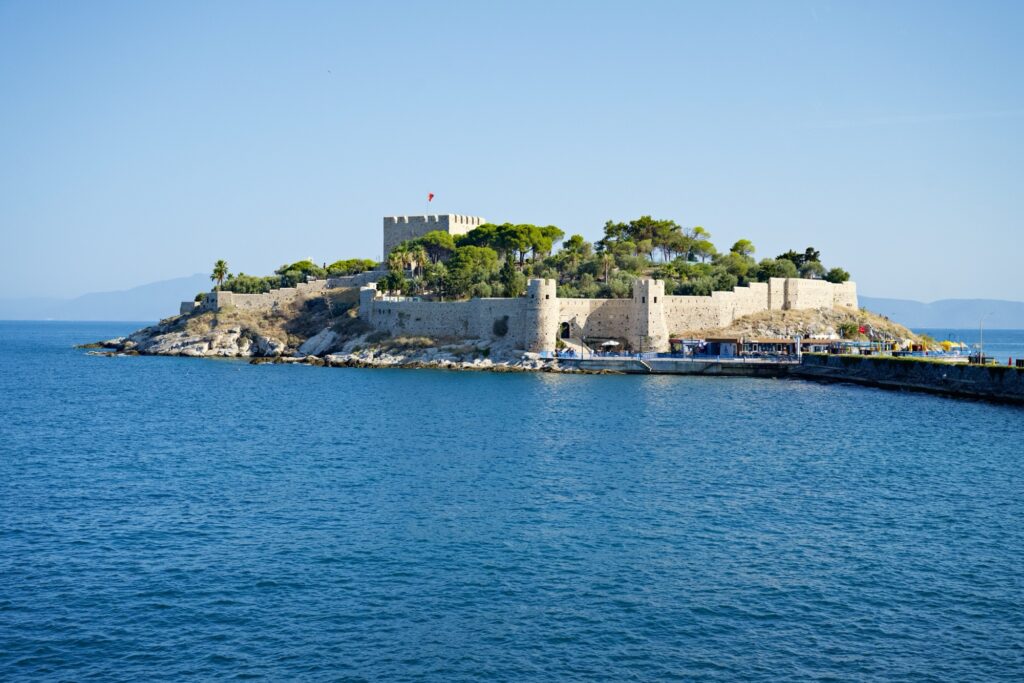
The name Kusadasi literally means “bird island”, even though Kusadasi is not an island. The name comes from a very small island just off the coast with a small fort. The fort dates back to the 14th century. The original name for this city means “New Port” because the port of Kusadasi replaced the original ports of Ephesus and Miletus that were no longer accessible due to being filled in by silt. These site are now mostly surrounded by cotton fields as we saw later in the day.
Yusuf mentioned that 3% of Turkey is on the European continent with the rest being in Asia Minor. Turkey is considered to be the bridge between Europe and Asia. He said that even though Turkey is a Muslim nation, it is religiously liberal. The official language is Turkish and not Arabic.
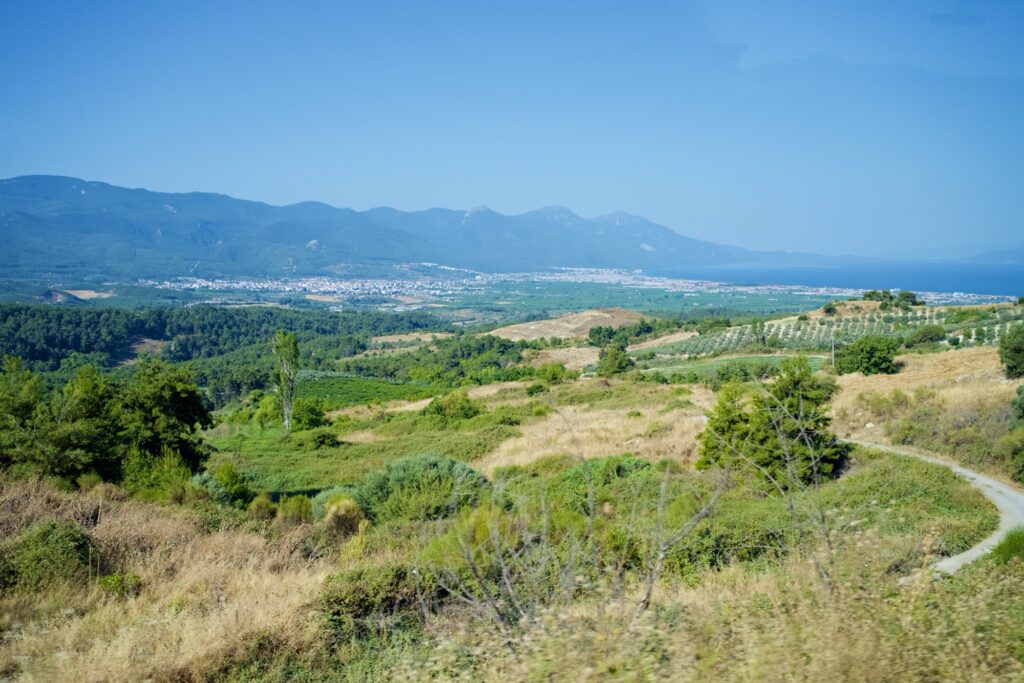
As we drove around today, I noted that the geography looks very similar to northern Israel with lots of hills and vegetation. There were also lots of giant windmills for generating electricity. As for our tour, it took us about 45 minutes to get to our first stop at the ruins of Miletus.
Miletus
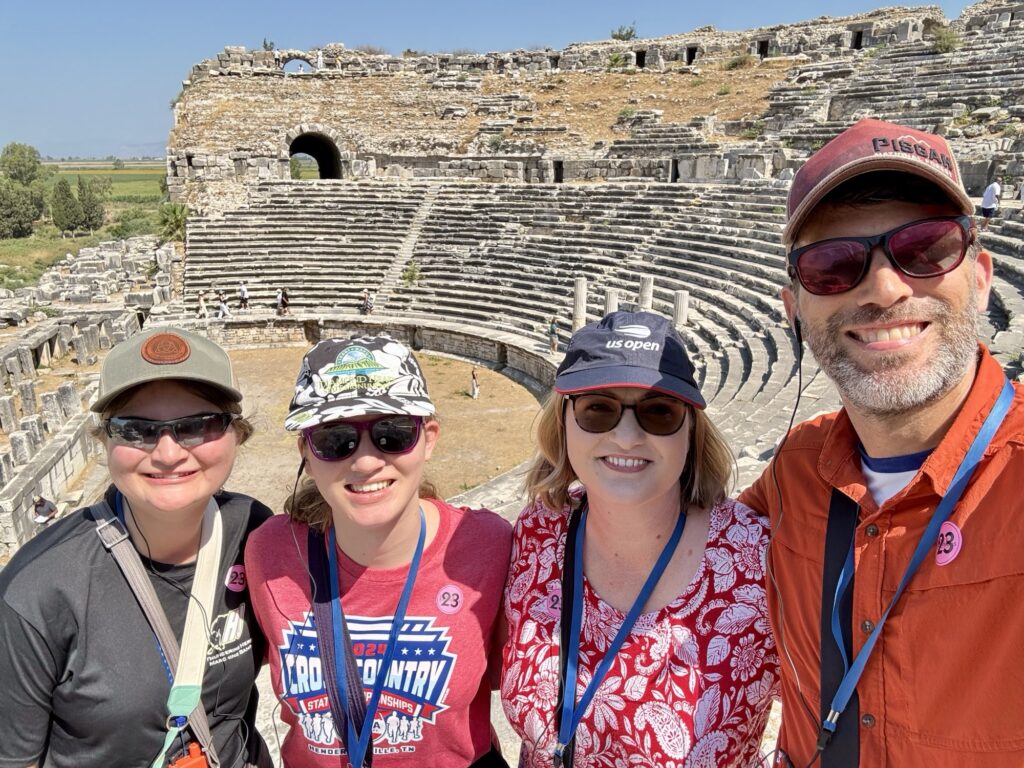
Miletus in the New Testament: Miletus is mentioned in Acts 20:13-38 near the end of Paul’s third missionary journey as he was headed to Jerusalem. Paul and his companions had just left Troas (7-12). Luke and the companions (note the “we” in vs. 13) boarded a ship and sailed to Assos where Paul met them (14), because he had traveled by land. From there they sailed to Mitylene (14), Chios (15), Samos (15), and then Miletus (15). Paul had intentionally sailed past the port at Ephesus because he did not want to be detained in Asia so he could make it the Jerusalem by Pentecost.. From Miletus, Luke tells us that Paul “sent to Ephesus and called the elders of the church to come to him” (17). The remainder of chapter 20 contains Paul’s exhortation to the Ephesian elders before leaving to finish his journey to Jerusalem. This exhortation included the following charge:
Acts 20:28-30 – Pay careful attention to yourselves and to all the flock, in which the Holy Spirit has made you overseers, to care for the church of God, which he obtained with his own blood. I know that after my departure fierce wolves will come in among you, not sparing the flock; 30 and from among your own selves will arise men speaking twisted things, to draw away the disciples after them.
For me, this is like a mission statement for a church eldership. It is clear from this writing that both Miletus and Ephesus were port cities in Asia Minor during the first century when Paul stopped there (as mentioned above). Because of this, I was very interested in learning about the geographical history of the area since neither are on the Aegean Sea today.
A reference to another possible visit of Paul to the city can be found in 2 Timothy 4:20.
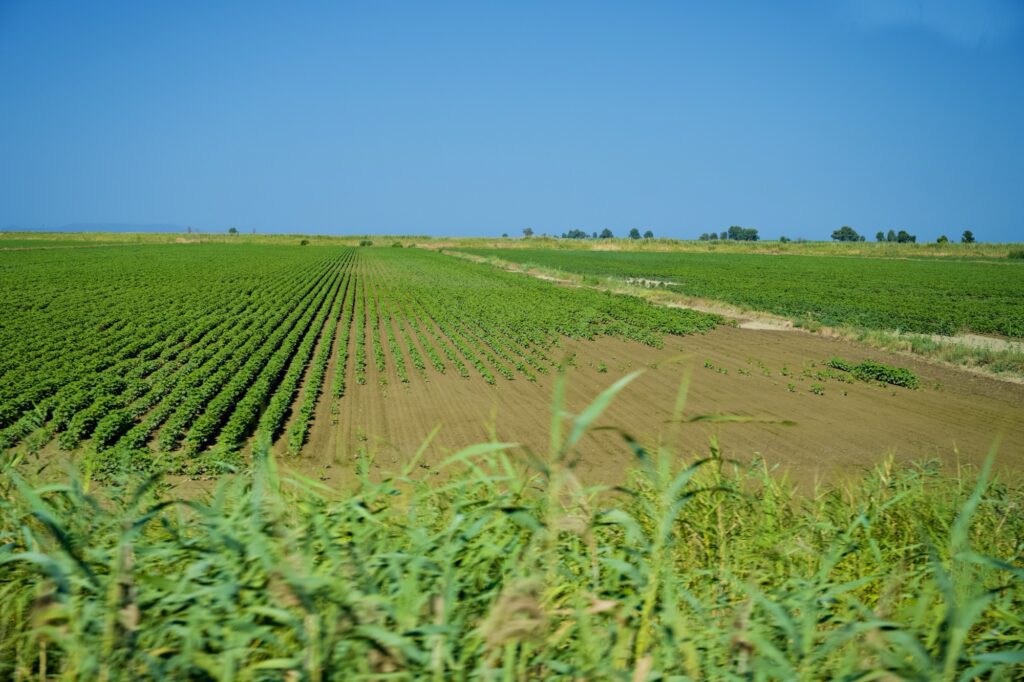
Our Visit Today: Yusuf had explained earlier that the area surrounding Miletus and Epesus had filled in with silt over the centuries, and as we approached the ruins of Miletus, we were able to see very flat cotton and sunflower fields where the sea had previously been.
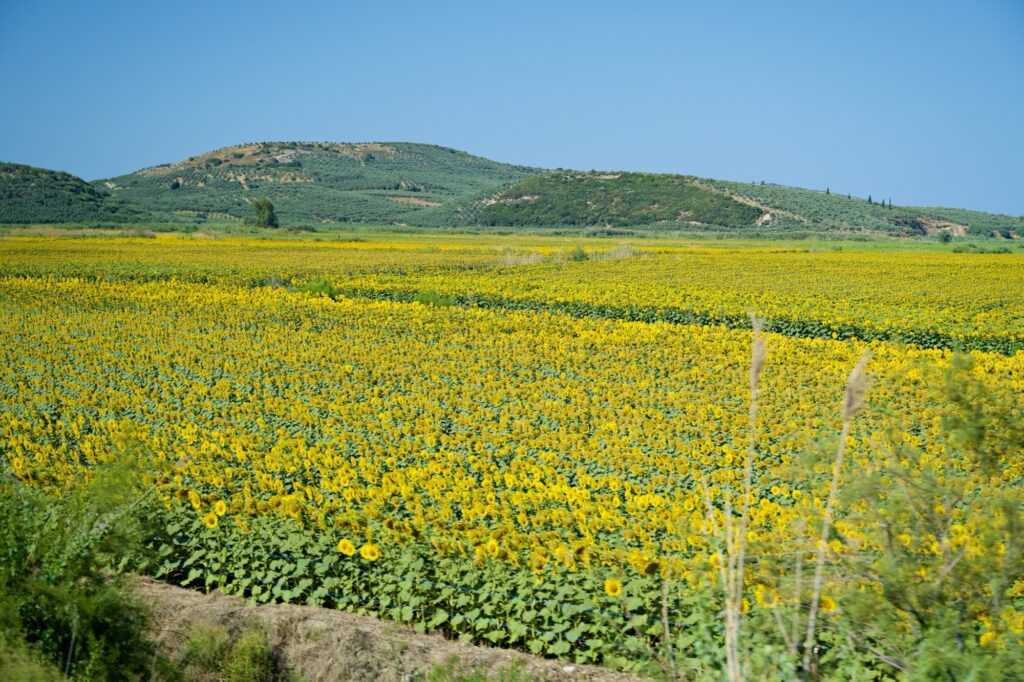
Yusuf said that the sunflower fields were for the production of sunflower oil, and they were beautiful. Today Miletus is 8 to 10 km from the Aegean Sea, which is crazy.
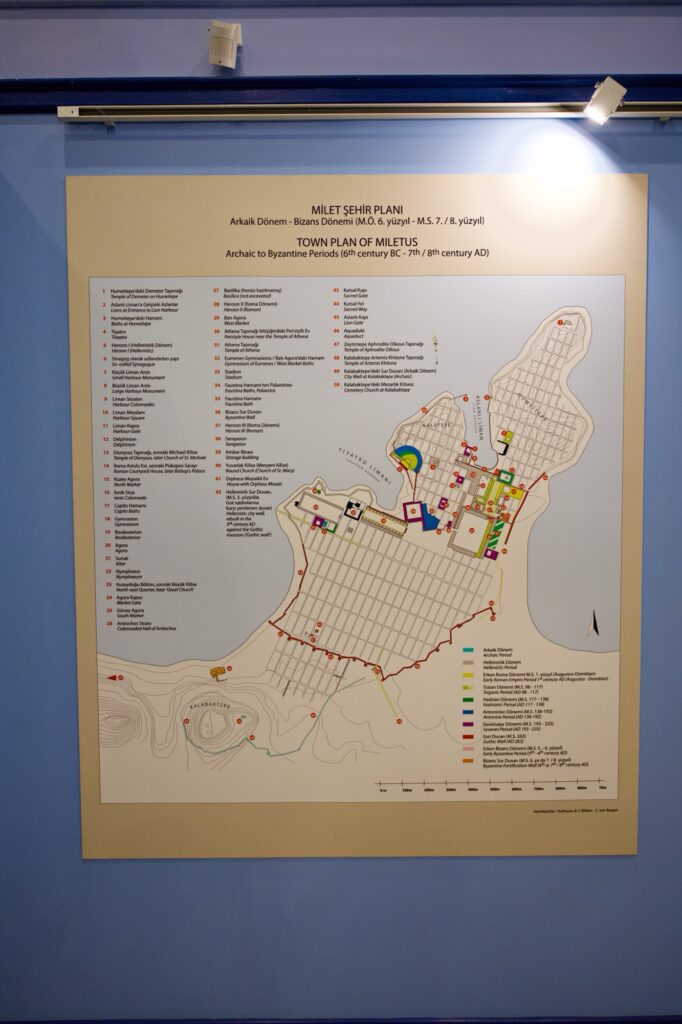
Our first stop at Miletus was at the museum. In there, Yusuf pointed us to maps that showed where the sea had been located in antiquity. The city used to have two commercial ports and was surrounded on three sides by the Aegean Sea. In the first century, Miletus was the second largest city in the Roman province of Ionia after Ephesus. It is estimated that the population during the heyday of the Roman Empire was around 150,000.
In the Roman period, the roads and homes in Miletus were built according to the Hippodamian Plan (a grid system). We had seen this before in the Roman city of Caesarea Maritime in Israel. Hippodamus was a Greek architect who was from Miletus. In Miletus, Yusuf explained that each block of the grid contained four homes. Miletus is considered one of the best-known examples of a city planned according to Hippodamus’s principles.
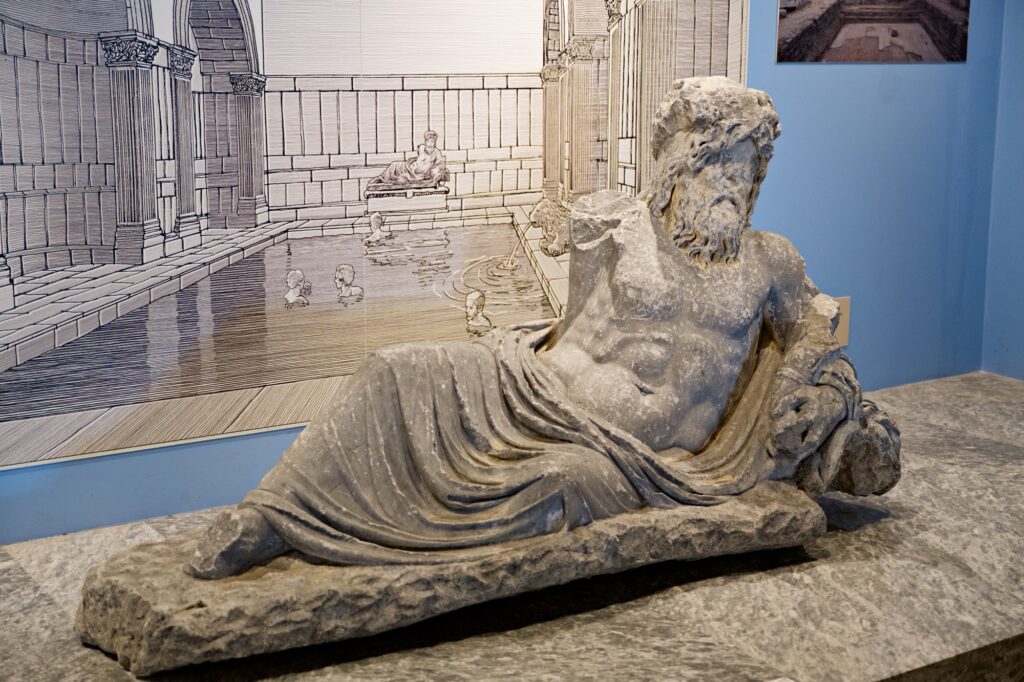
After briefly telling us a little bit about the history of Miletus, and the layout of the city, we had a few minutes to explore some of the artifacts from the city. Unfortunately, not much has been excavated in Miletus due to villages having been built on top of the area over the years. The only significant building that has been uncovered is a second century AD Roman theatre that would not have been standing in Paul’s day.
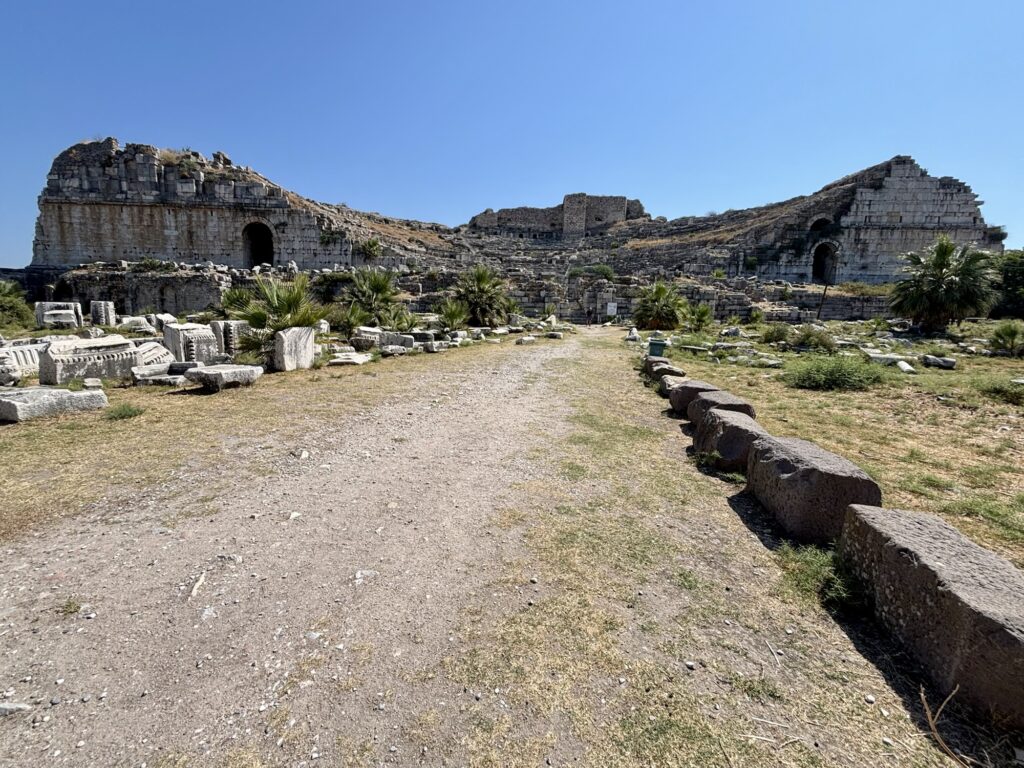
We got back on the bus for a very short ride to this Roman theater. Yusuf said there is evidence of a much smaller Greek theater that existed prior to the Roman theater. The Greek theater was relatively small and would have seated around 5,000 people. The excavated Roman theater could seat up to 15,000 people. Typically theater were built to hold up to 10% of the city’s population. Yusuf explained that Roman theaters were move advanced with features like vomitorium for entrance and exit of the crowd. This particular theater had two vomitorium.
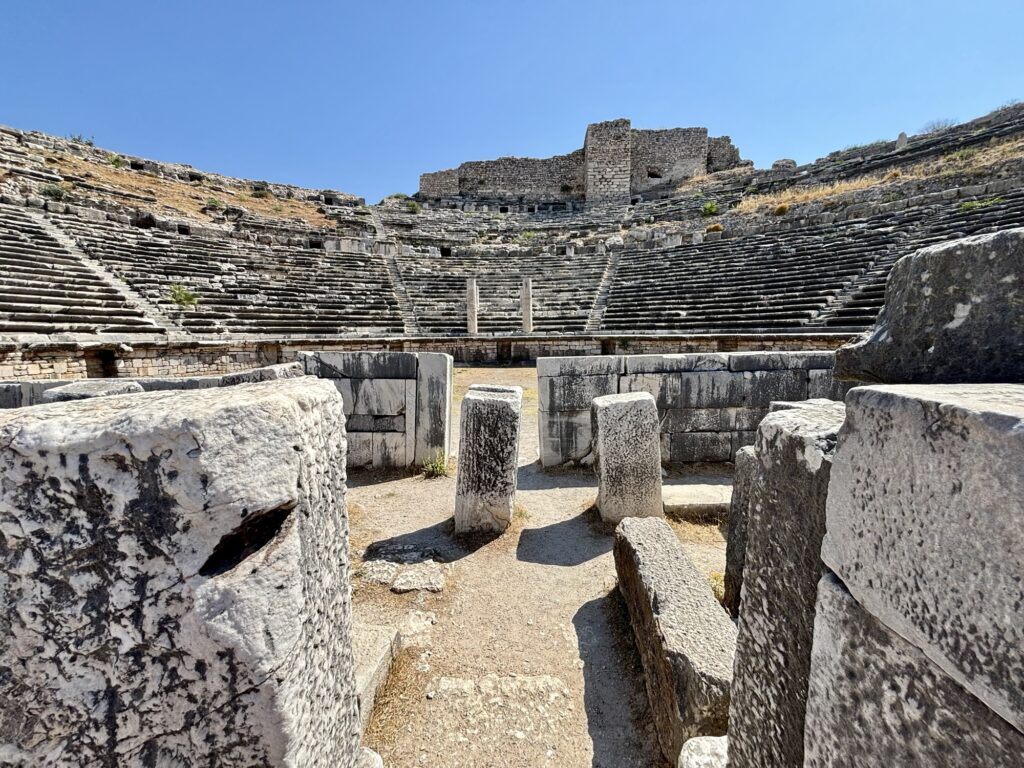
Yusuf pointed out that there is a fort that was built at the top of the theater at the beginning of the seventh century AD. It does look quite out of place!
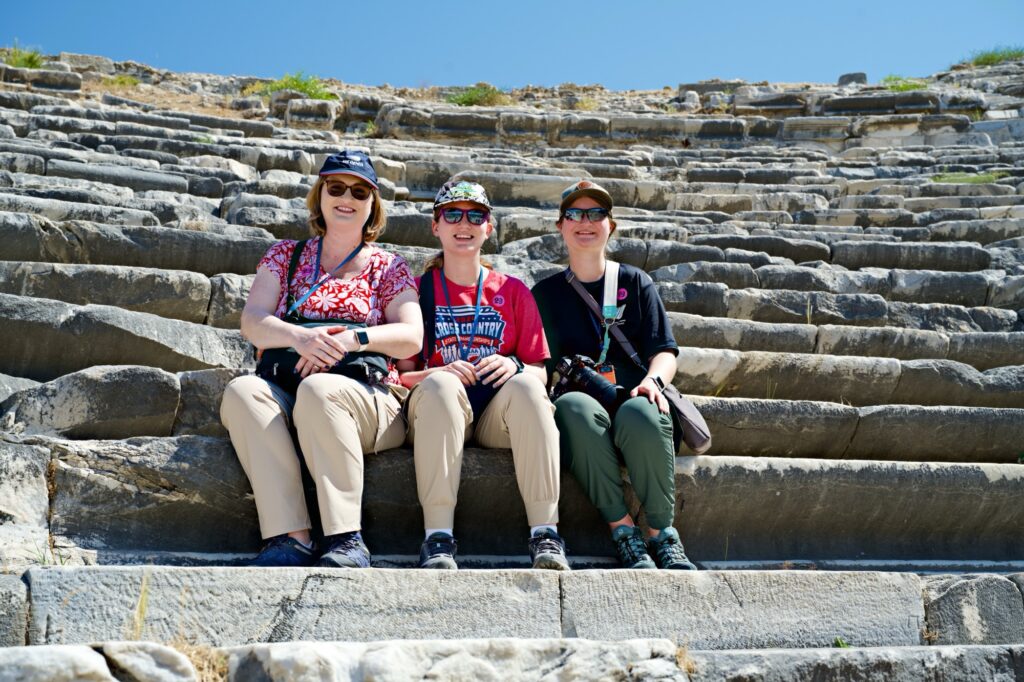
As we entered the theater, Yusuf said that the semi-circle floor was called the “orchestra”, which is fascinating since both Kate and Sara play in orchestras. Our family went up into the seats of the theater, and Yusuf used us to demonstrate another feature of Roman theaters.
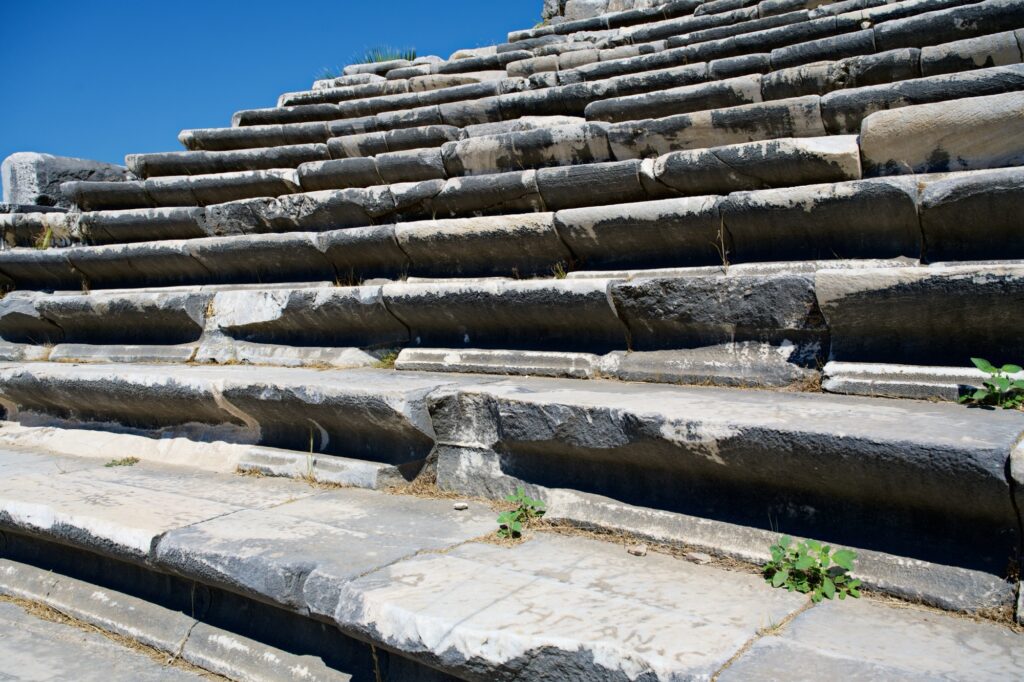
Under the seats, the marble is curved so that those sitting could pull their feet back when someone was trying to walk through. He had me walk through while Olivia, Kate, and Sara were sitting, and it worked really well.
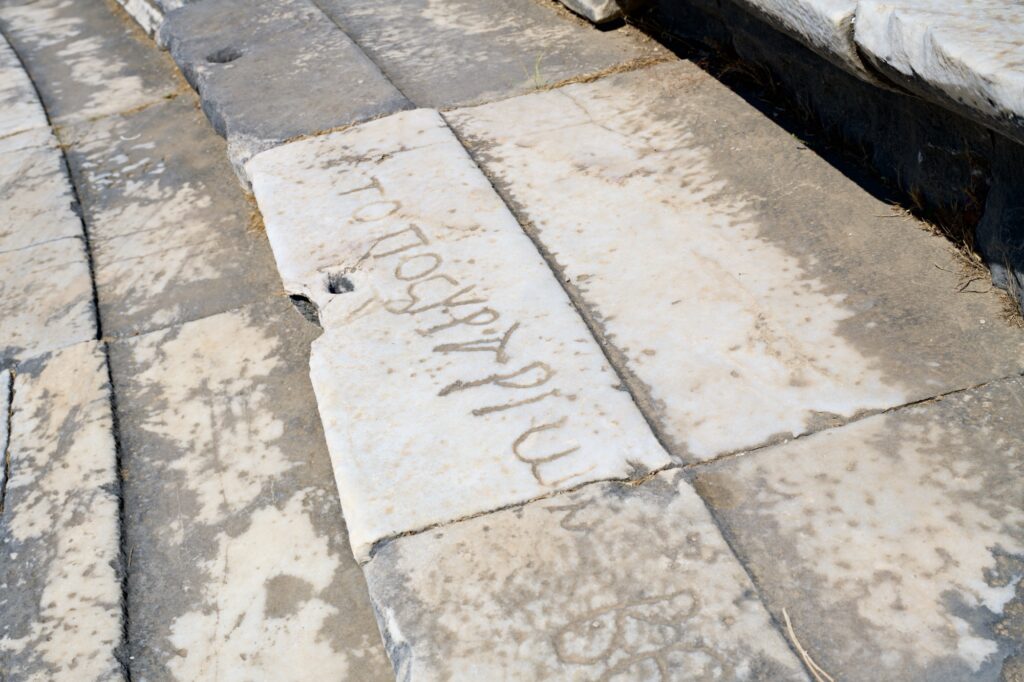
Up in the seats, Yusuf pointed out names for reserved seats…
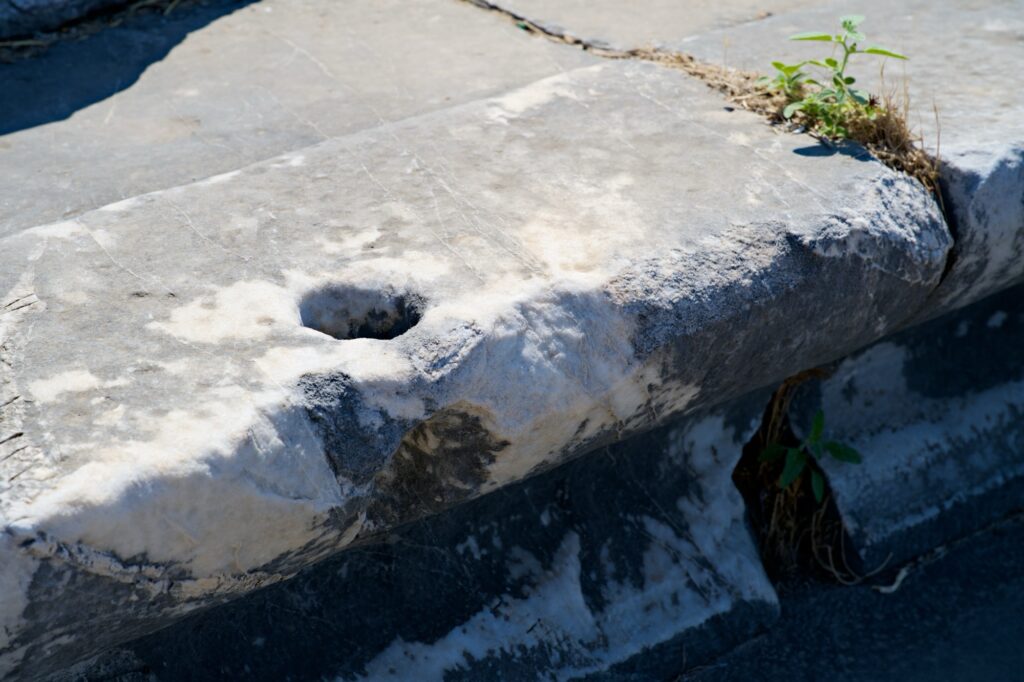
…and holes for placing personal tents.
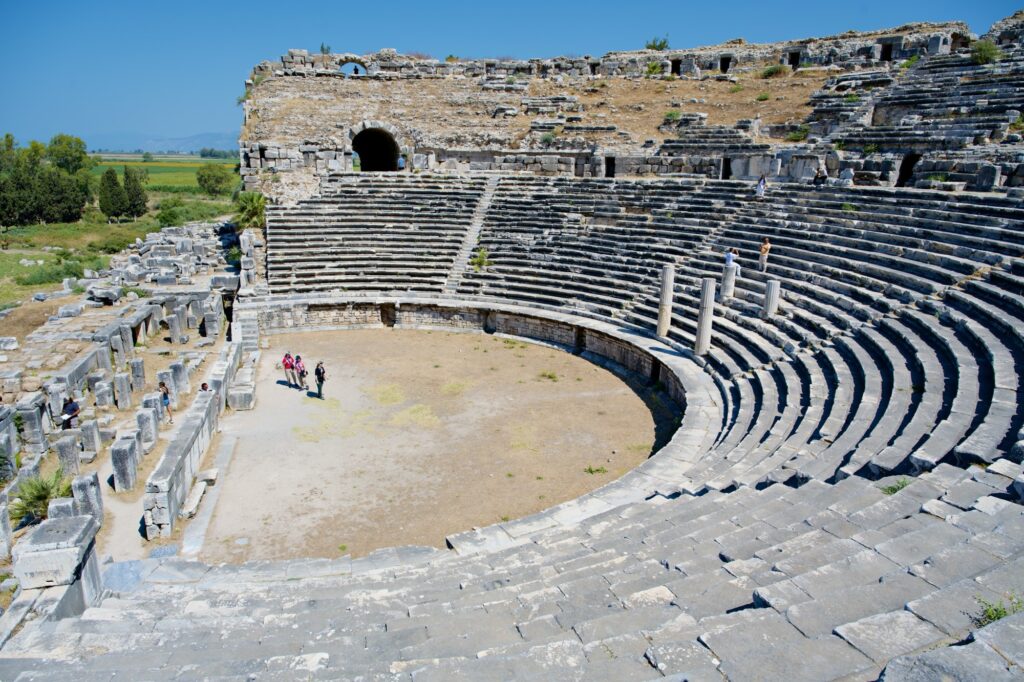
Later in our visit, I was standing at the top of the first level, and Olivia, Kate, & Sara were standing on the orchestra. Kate sang Think of Me from Phantom of the Opera (Sara harmonized), and I could hear her just as clear as day, even without amplification. These ancient theaters are amazing!
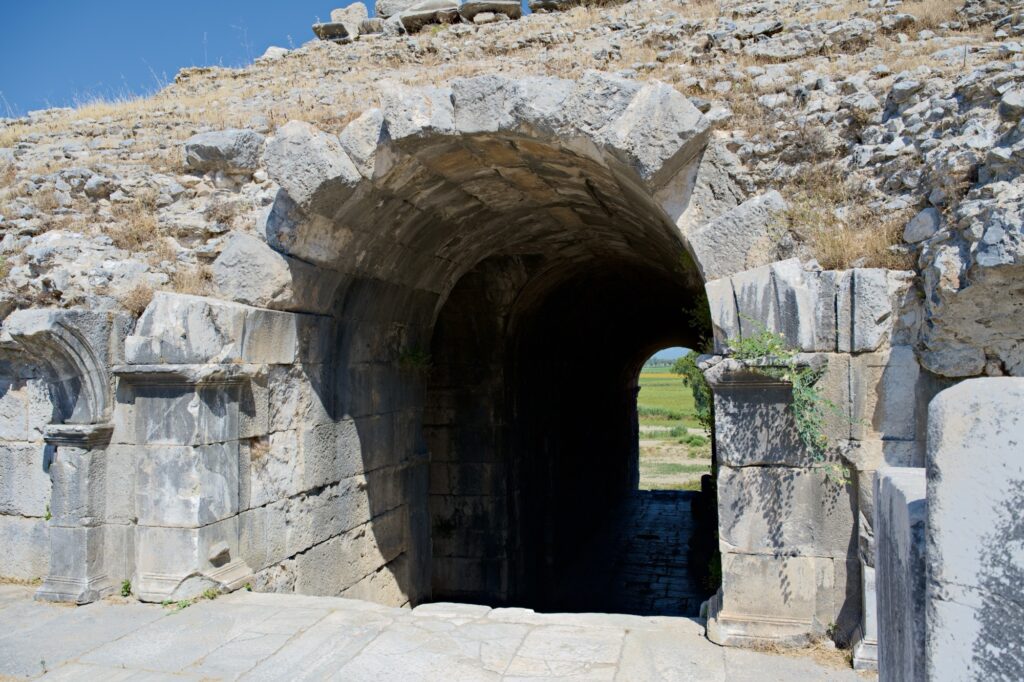
I knew this theater was significantly smaller than the one we would see later in Ephesus, but it was still an awesome visit. I loved exploring different areas in the seats, the isles, and the vomitorium.
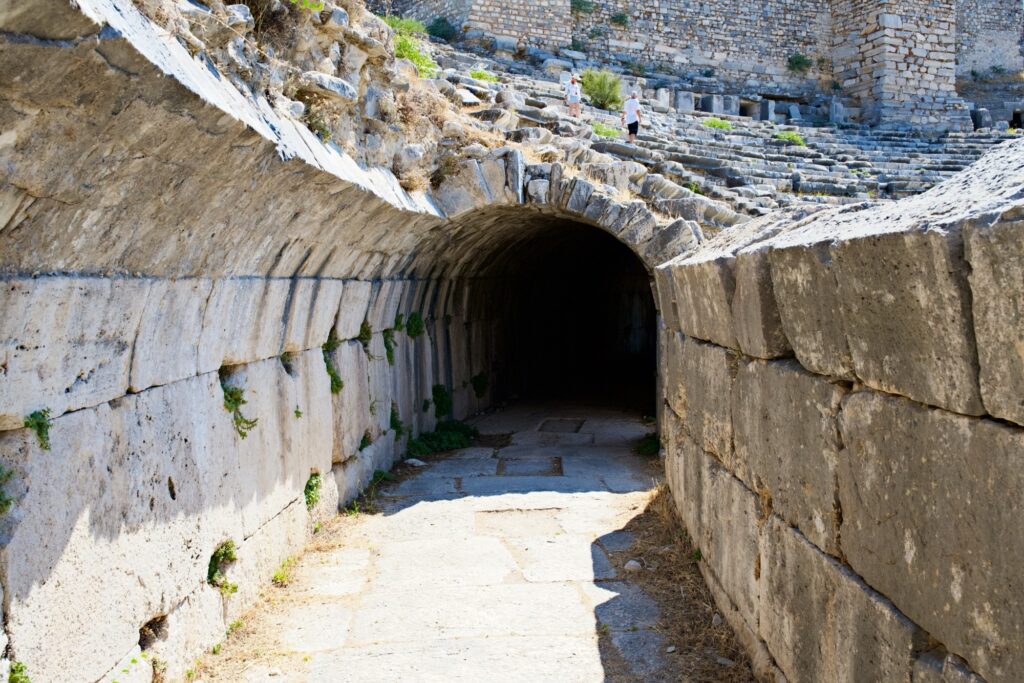
There was even a tunnel at the back of the first section of seats.
Magnesia
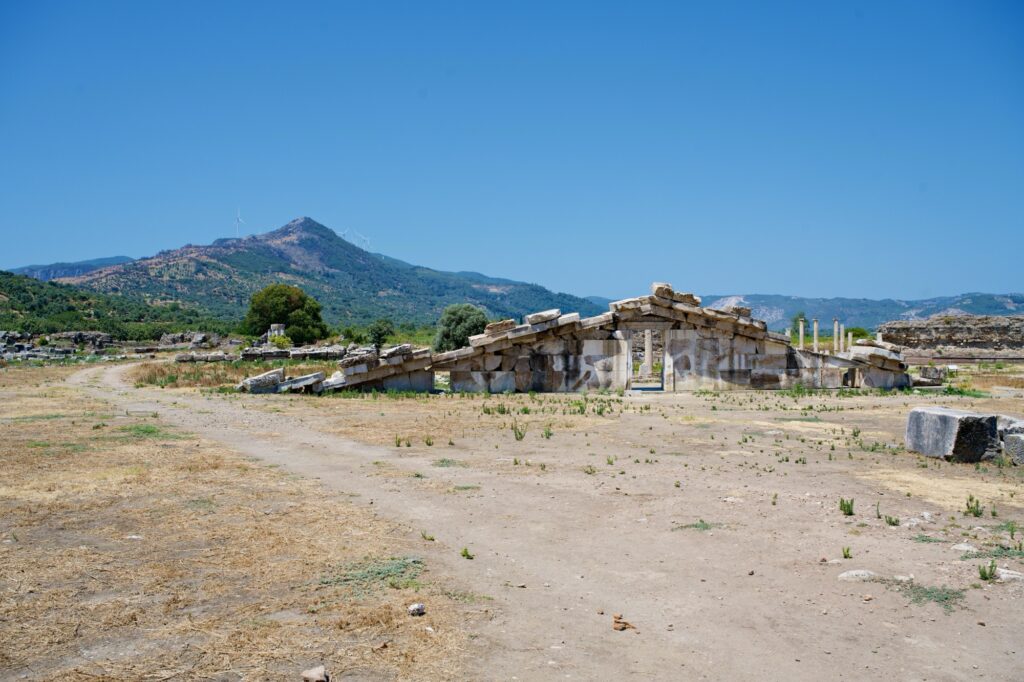
After Miletus, we boarded the bus to travel to Magnesia. This city is not mentioned in the Bible, but was home to the third largest temple of Artemis (Diana) behind Ephesus and Sardis. Nothing remains of those two temples, so I was excited to see the remains of the temple in Magnesia, especially considering the mention of Artemis (Diana) in Acts 19 associated with Ephesus.
The temple of Artemis in Magnesia dates back tothe fourth century BC during classic Greek period. On a side note, the English translation on the sign explaining the temple said 4rd century AD, which I found interesting.
Yusuf explained that the Artemis temple in Magnesia had one row of columns where the one in Ephesus had two row of columns. This makes sense considering that the temple on Ephesus was one of the seven wonders of the ancient world.
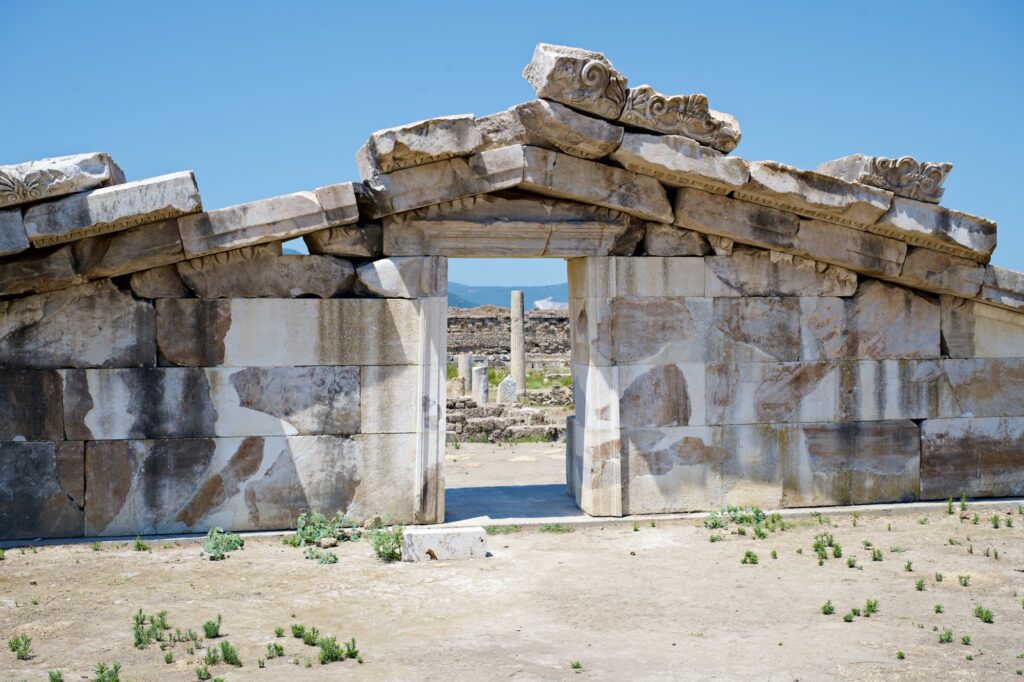
The first piece of the excavated temple that we saw was part of the roof (the entablature) which had been reconstructed with original materials on the ground. It had one large window and Yusuf said that originally this would have contained a statue of Artemis. This statue was known as “Artemis with White Eyebrows” because it was made of bright white marble with pronounced eyebrows.
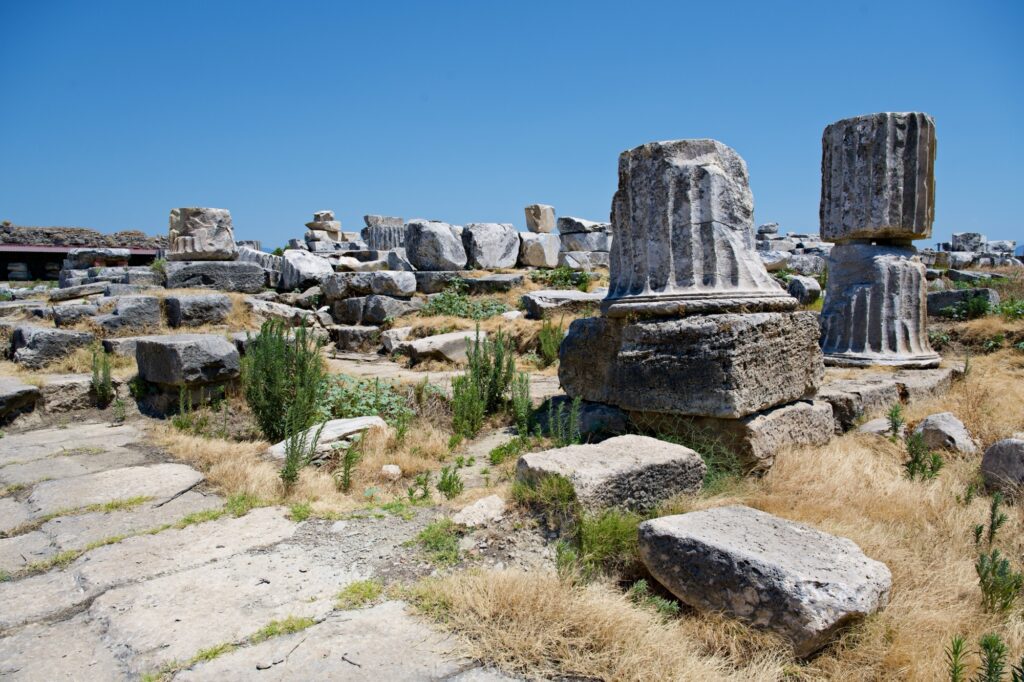
The main structure of the temple is mostly rubble with many large pieces of the columns that used to surround the temple.

We walked to the very large temple courtyard where we saw the fountain and altar where sacrifices would have been made.
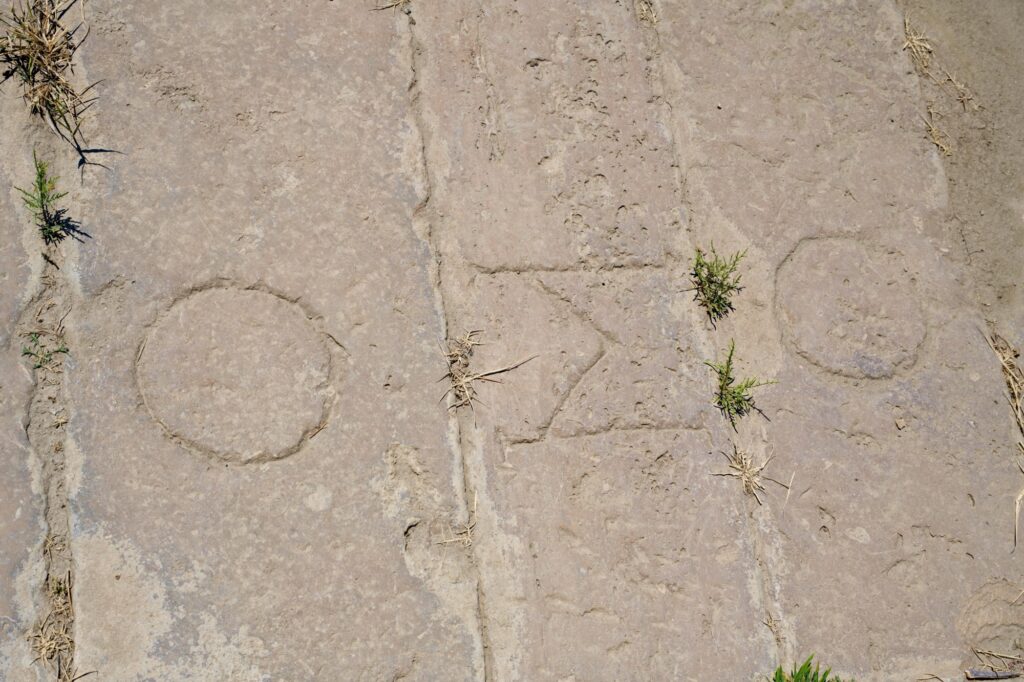
Yusuf said that all the stones in the courtyard were original and pointed out some remaining carved initials written in Greek letters.
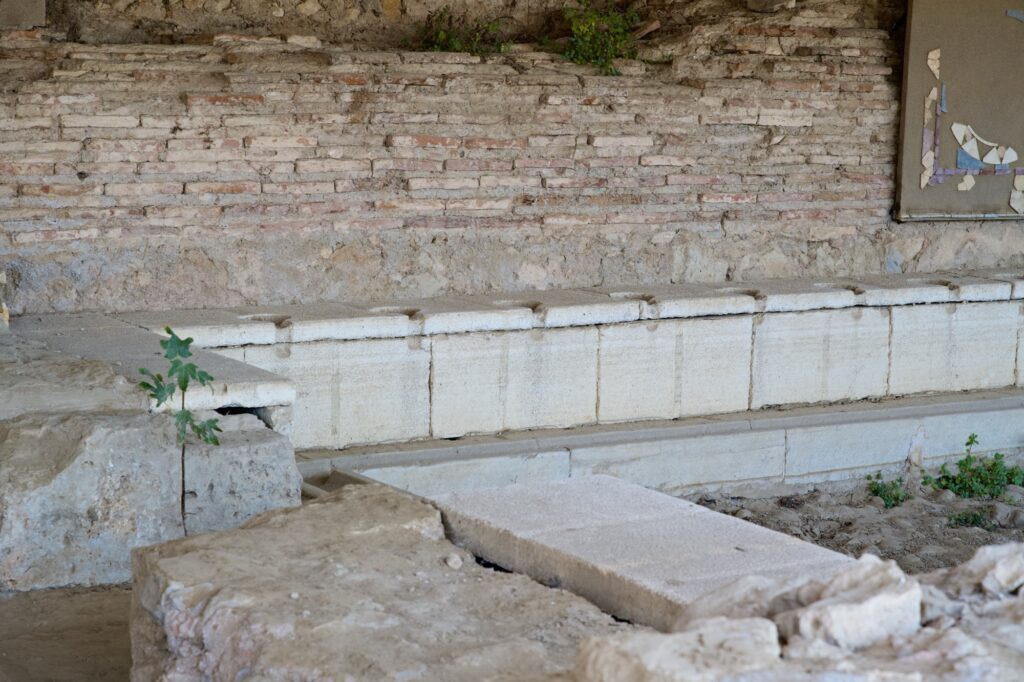
Our final stop in Magnesia was to the commercial agora where we saw the remains of shops, a library, and a public toilet. This was very similar to the public latrines we have seen in Israel.
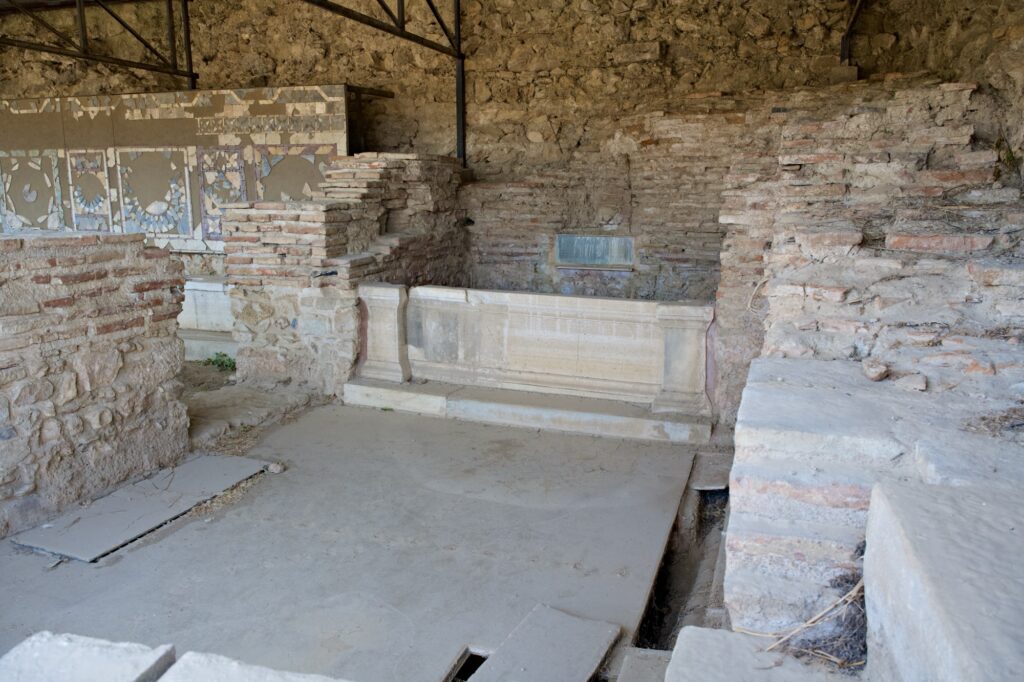
One one end of the latrines was a public bath that had terra cotta pipes for the water.

Much like Miletus, much of Magnesia is not yet excavated. Yusuf showed us a semi-circular shaped embankment they believe contains a theatre.
After boarding the bus and leaving Magnesia, we headed toward the archaeological site at Ephesus.
Ephesus
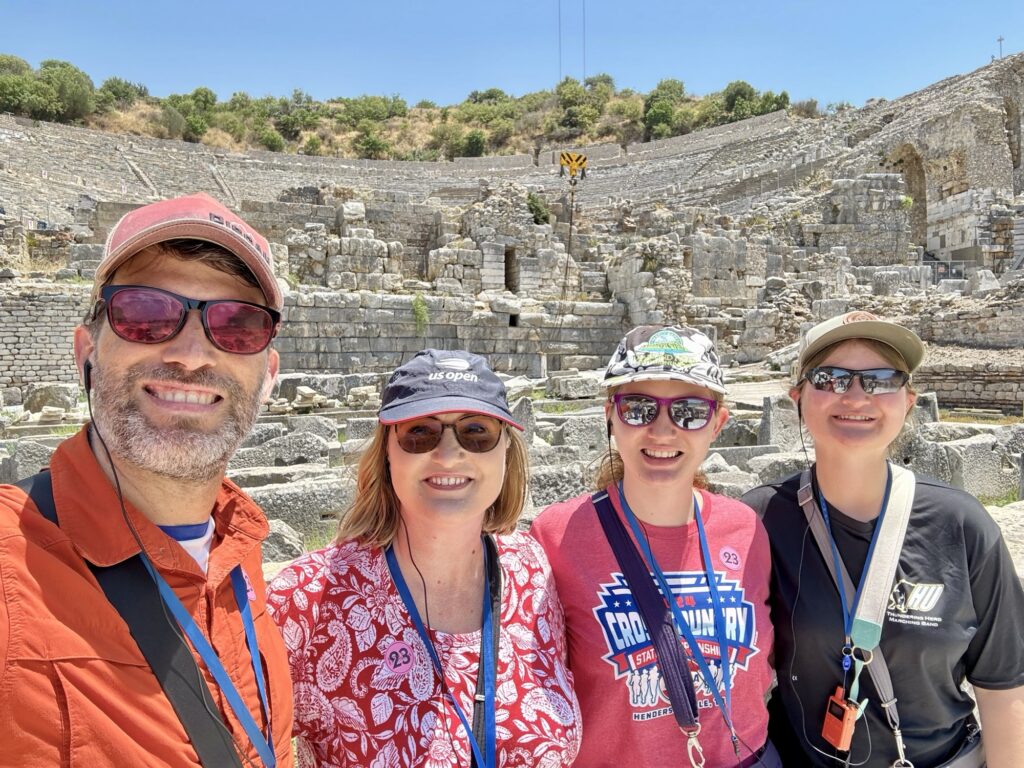
Ephesus in the New Testament: In the New Testament, Ephesus and Ephesians are mentioned more than twenty times. Many of these references are associated with the Apostle Paul who spent several years evangelizing in Ephesus.
Paul in Ephesus: In Acts 18:19–21, Paul sailed from Corinth to Ephesus with Priscilla and Aquila for his first visit there at the end of his second missionary journey. On a side note, this Priscilla and Aquila also instructed Apollos in Ephesus (Acts 18:24–26). Paul returned on his third missionary journey (Acts 19:1-20:1) to stay for more than two years preaching and performing miracles (Could have been up to 3 years – See Acts 20:31). His preaching was initially in the Jewish synagogue per his custom, but then moved to the Hall of Tyrannus once some of the Jews became stubborn and spoke evil of “the Way”(Acts 19:8-10). It was through Paul’s preaching in Ephesus that “all the residents of Asia heard the word of the Lord…”
A silversmith named Demetrius, who made his living selling “silver shrines of Artemis”, stirred up his fellow craftsman and started a riot due to the threat of Paul’s teaching to his business (Acts 19:23-27). They shouted “Great is Artemis of the Ephesians” and rushed into the Great Theater of Ephesus dragging Paul’s companions, Gaius and Aristarchus, with them (Acts 19:28-29). Paul wanted to go in among the crowd, but the disciples would not let him (Acts 19:30-31). A Jew named Alexander tried to quiet the crowd, but this led to them shouting “Great is Artemis of the Ephesians” for two hours (Acts 19:33-34) Eventually the town clerk was able to calm the crowd (Acts 19:35–41). In 1 Corinthians 15:32, Paul mentions “I fought with the beasts at Ephesus…”, which could be a reference to the riot in Acts 19.
As mentioned above, on his way back to Jerusalem, Paul met with the elders of Ephesus at Miletus (Acts 20:16–38).
Paul’s Letter to the Ephesians: Even though our modern Bibles all include that this letter is addressed “To the saints who are in Ephesus”, the words “in Ephesus” are not present in the earliest manuscripts. My opinion is that the letter to the Ephesians was actually a circular letter intended to be spread to many churches (possibly the churches in Asia – see Revelation). It is possible that a copy sent to Ephesus was inscribed with the line mentioned above.
Timothy in Ephesus: Pau’s protege Timothy was an evangelist in Ephesus during the time when both of Paul’s letters to him were written (see 1 Timothy 1:3; 2 Timothy 1:18; 4:12).
The Book of Revelation: This book, written by the Apostle John, is addressed to the “seven churches” in Asia, which included Ephesus (Revelation 1:11). In the message to the church at Ephesus in Revelation 2:1-7, the angel commends them for their “patient endurance”, but chastises them for abandoning “the love you had at first”. The angel urges them to “repent, and do the works you did at first”.
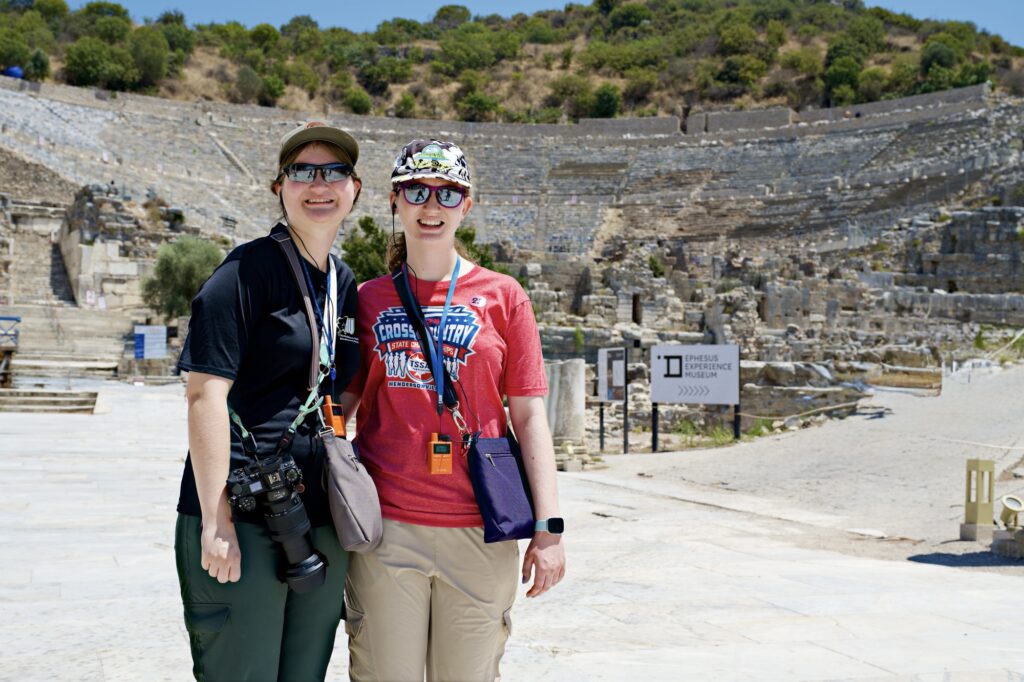
Our Visit Today: Once inside the site, Yusuf began to tell us a little about the history of Ephesus and the reasons why it was such an important city to the ancient world. This primarily revolved around the Temple of Artemis (the Artemision) which dates back to the fourth century BC. As mentioned above, it was one of the seven wonders of the ancient world. Almost nothing is left of this majestic temple today, but it made Ephesus a religious city and attracted people from all over the known world. By the way, Artemis is the Greek name, and Diana is the Roman name. From my own research before the trip, the version of Artemis at Ephesus also likely incorporated some elements of the gods of the archaic period before the time of the Greeks.
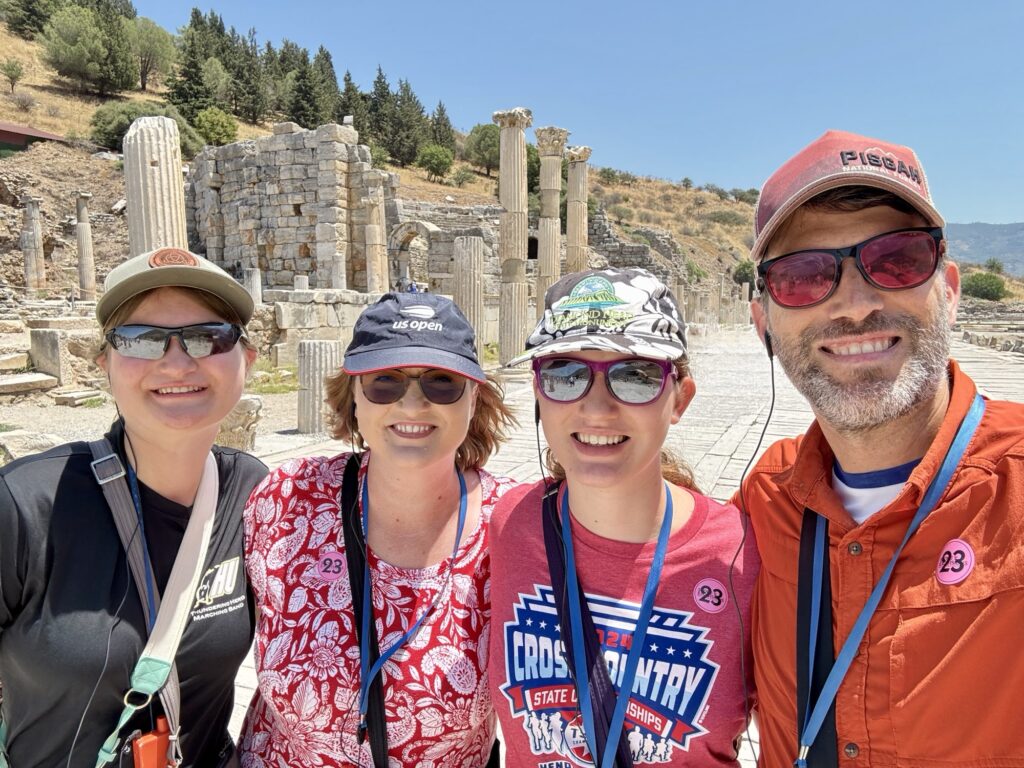
Ephesus had approximately 250,000 residents during its heyday, which made it the fourth largest city in the Roman Empire. This lines up with the size of the great theater, which had a capacity of 24,000. Two things primarily contributed to the downfall of Ephesus. The first was Emperor Constantine declaring Christianity to be the state religion of the Roman Empire in the 380 AD. When this happened, pagan gods like Artemis (Diana) lost their popularity. The second was the silting in of the land around Ephesus, which prohibited it from continuing as a port city during the Byzantine period (fifth to 10th centuries AD). By 700 AD, Ephesus was mostly abandoned. Today only about 25% of the site has been excavated.
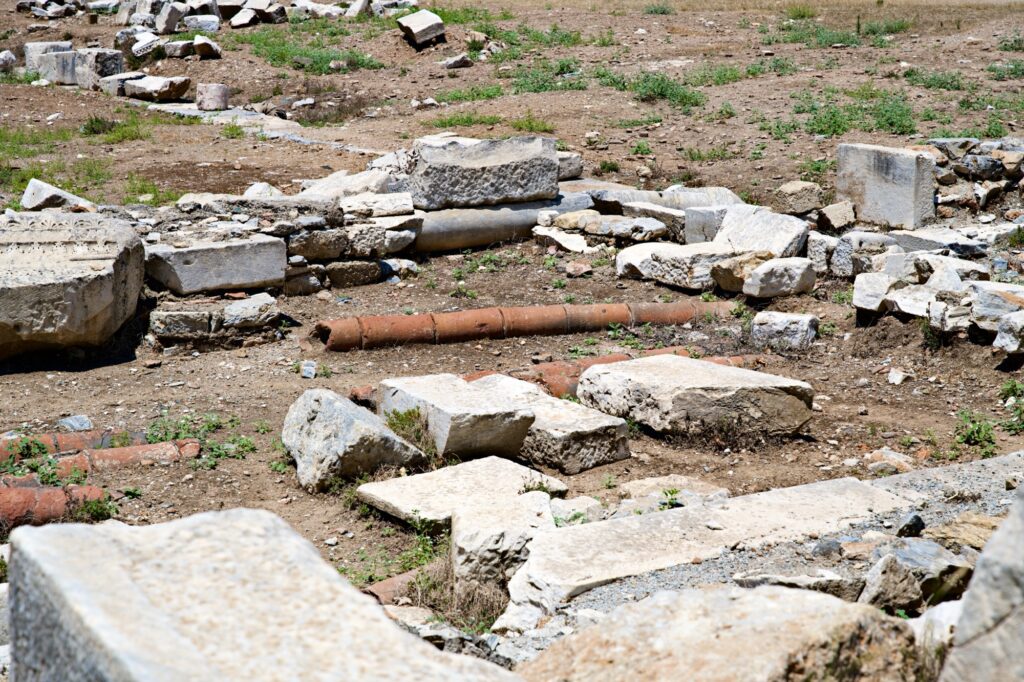
We began our tour and the top of the site, and Yusuf pointed out a number of excavated water pipes. Water was suppled from three or four sources and brought to Ephesus via aqueducts.
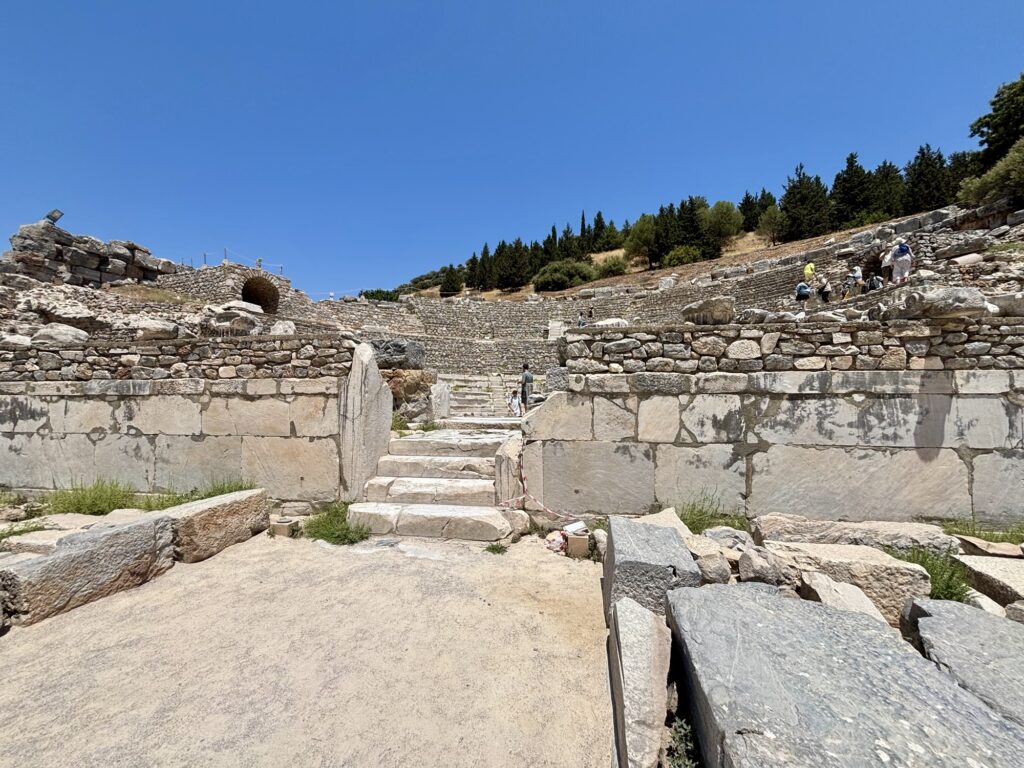
Next we saw a small Roman theater that was simply an appetizer for the great theater we would see later. Yusuf described this as being like a small concert venue.
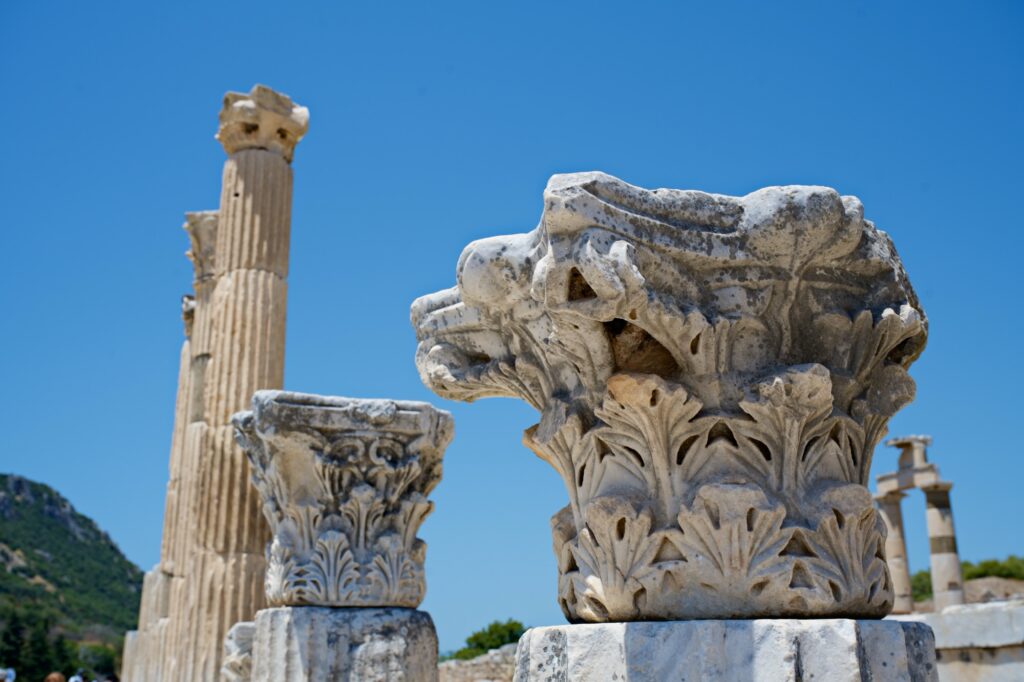
Outside the theater was two rows of columns that Yusuf said would have been a portico (or porch), meaning it would have been covered.
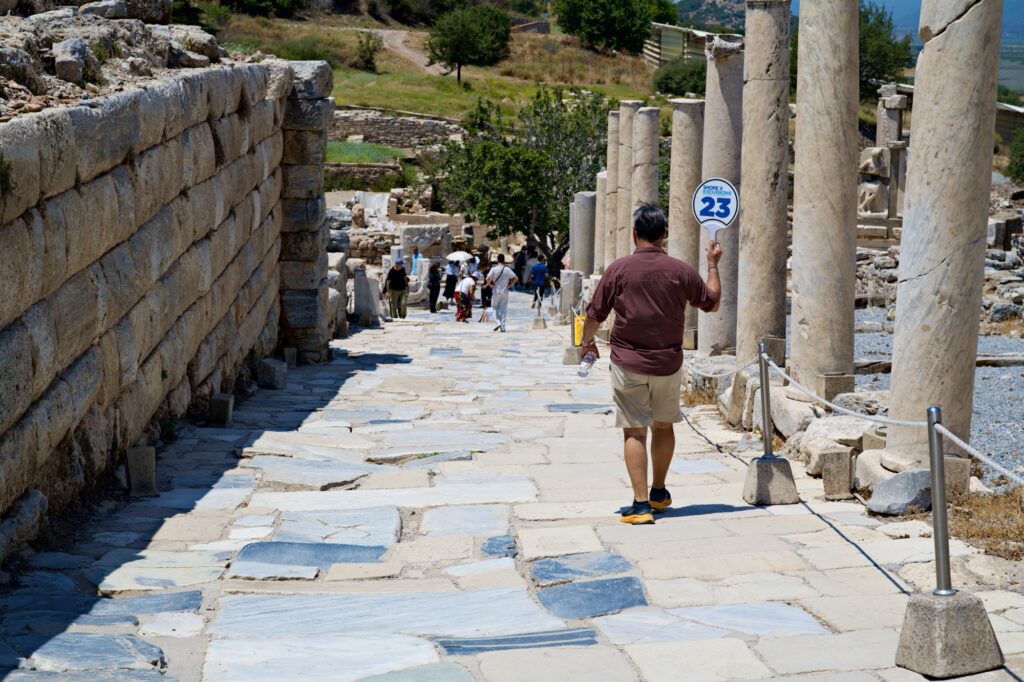
From there we walked down a slick marble street to the Domitian Square and saw a number of interesting items, including:
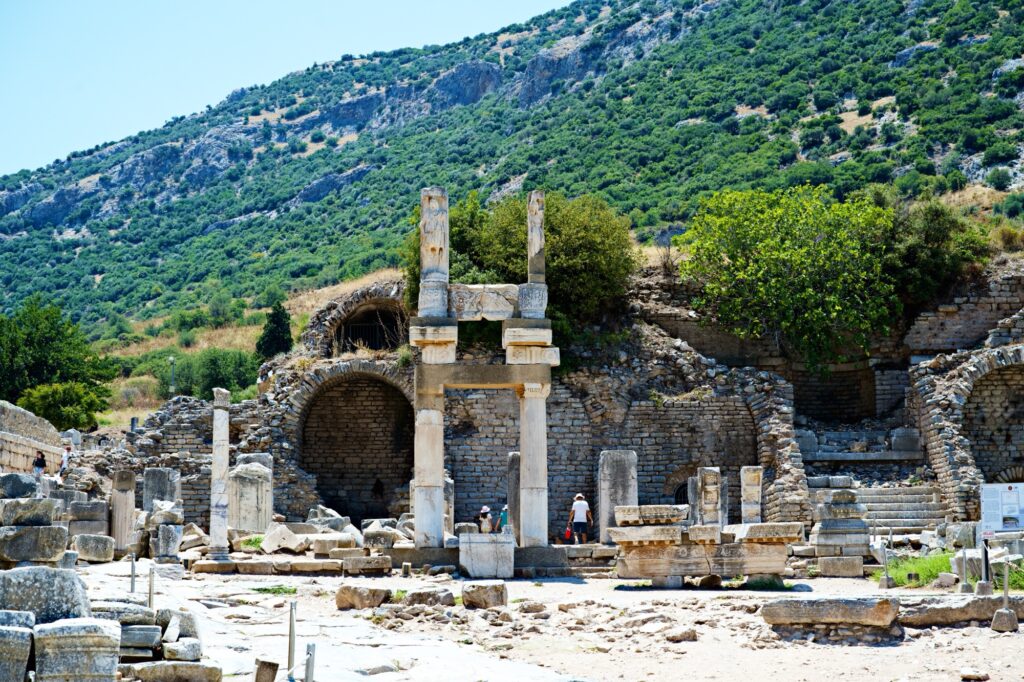
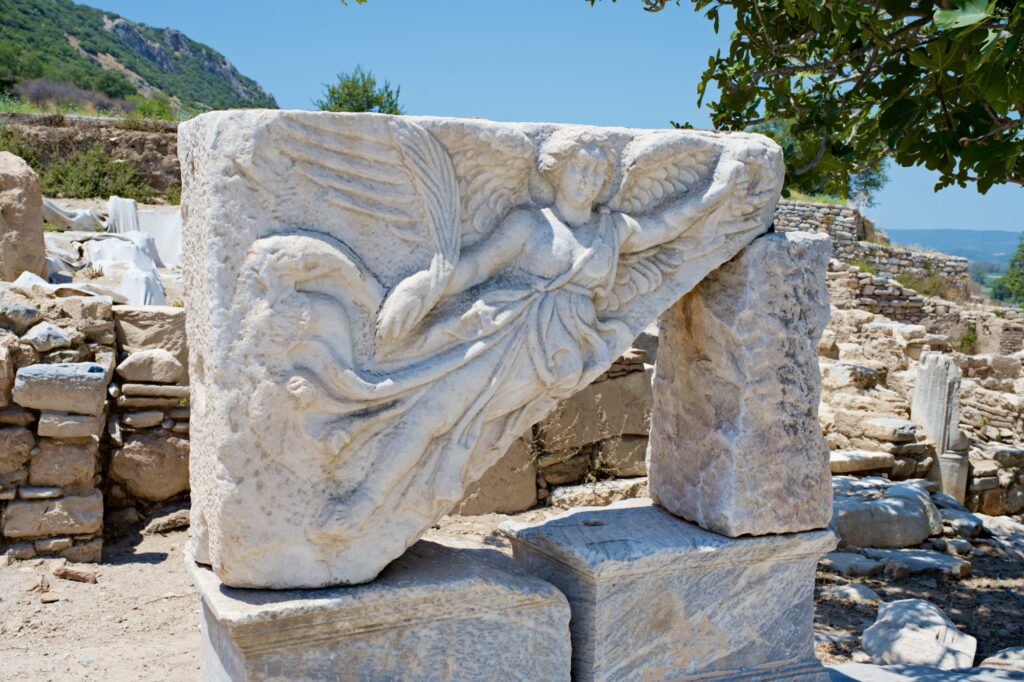
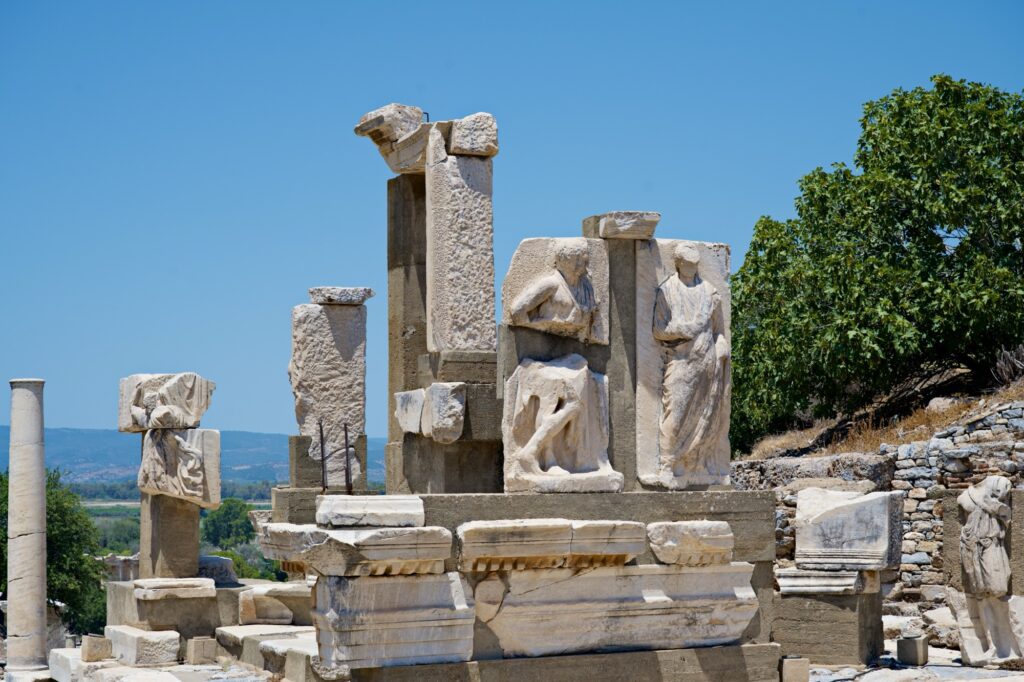
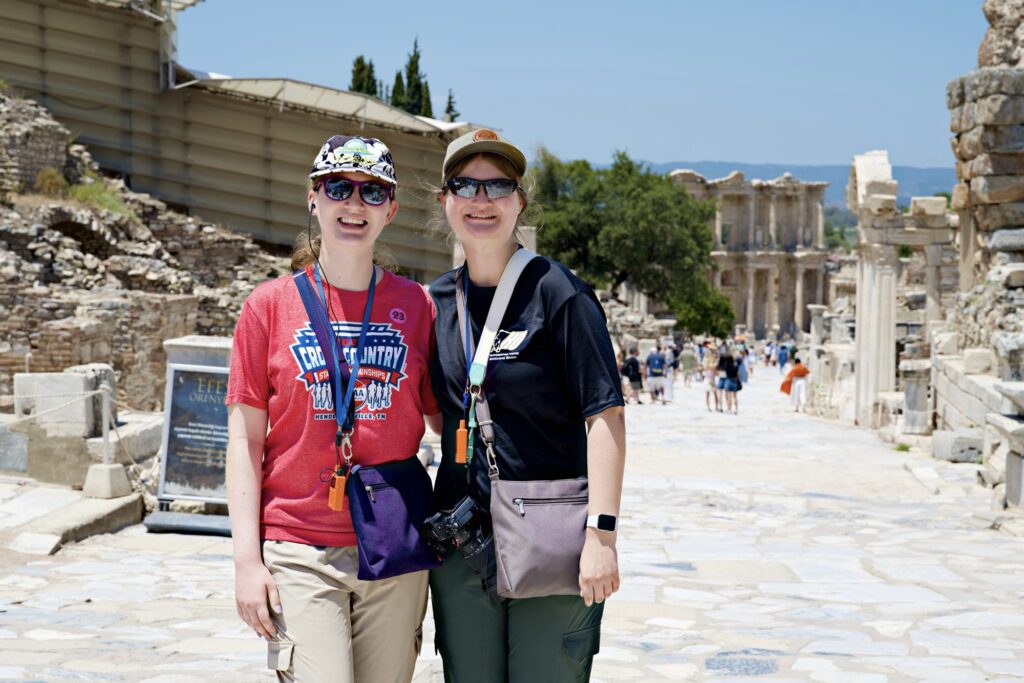
From Domitian Square, we began to walk down the beautiful, marble, and also very slick Curetes Street, which was the main boulevard of Ephesus. It is 210 meters long and contained a sewer channel underneath.
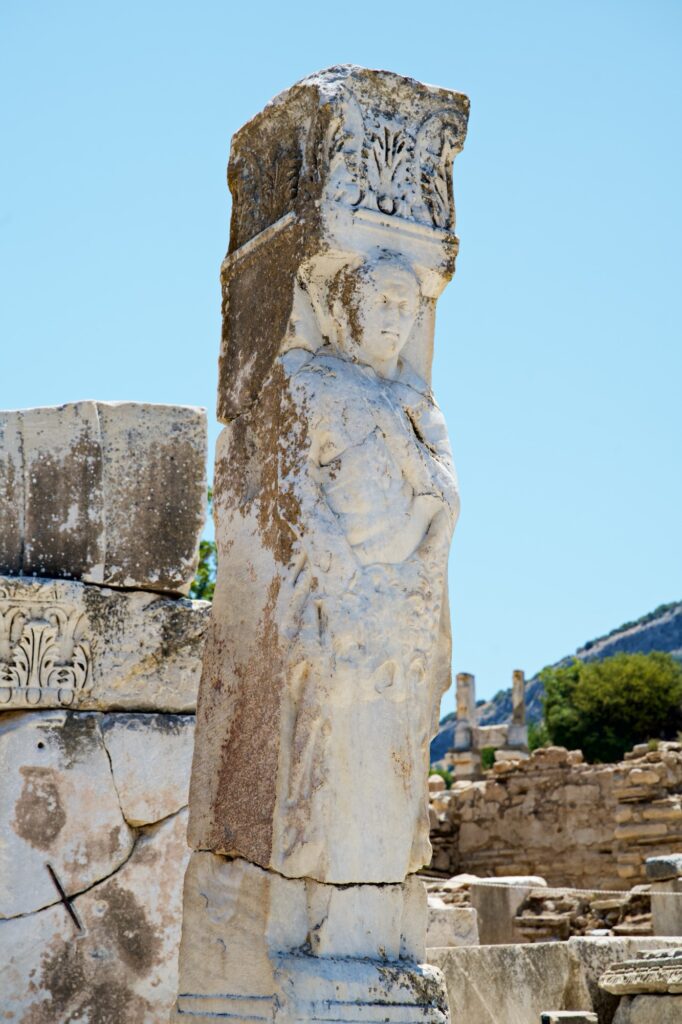
At the beginning of the street is Hercules Gate, which contained two columns depicting the Greek hero Hercules.
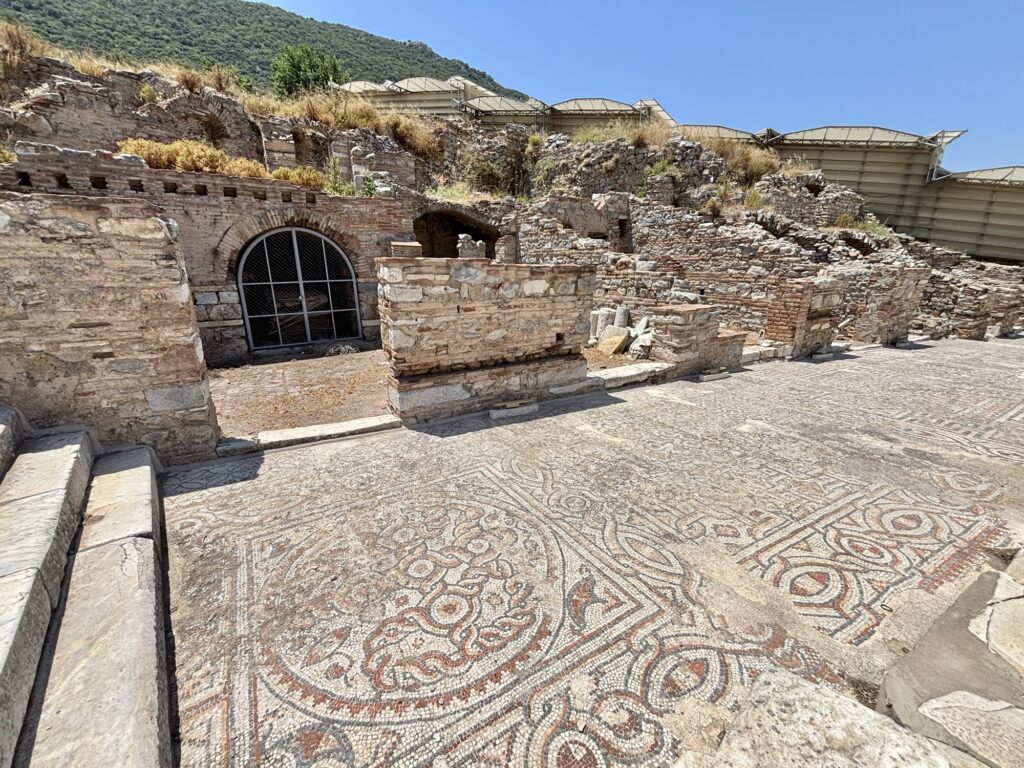
On this street, we saw a beautiful mosaic sidewalk and shops. The mosaic sidewalk dates from 4th century AD.
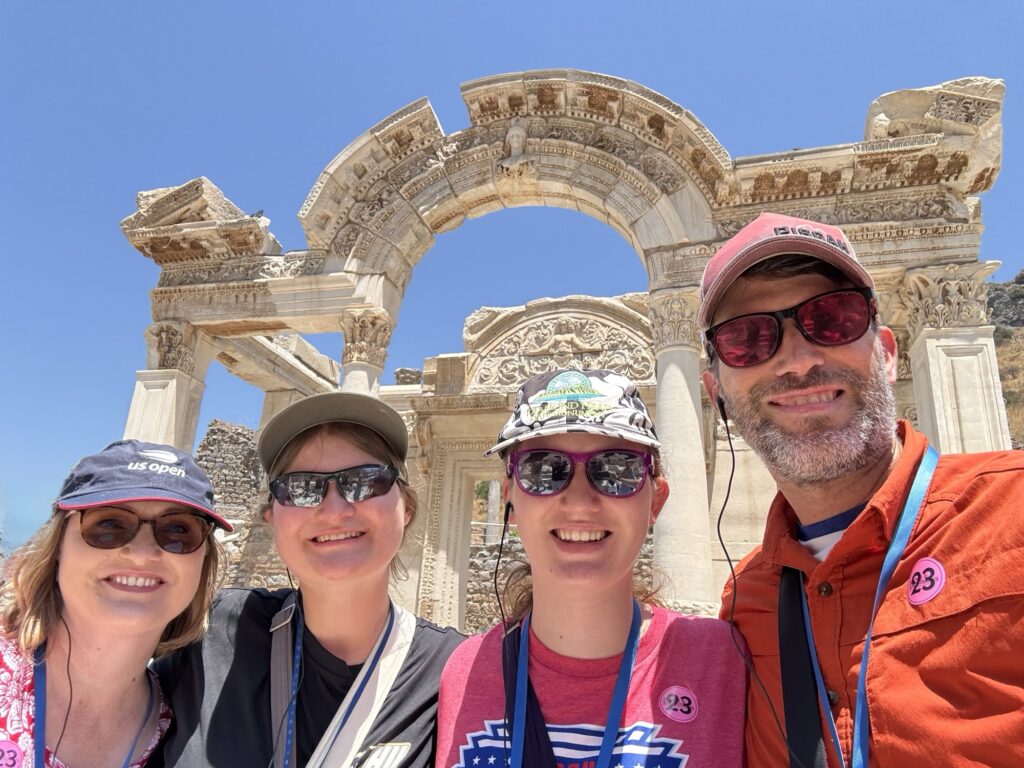
We also saw the Temple of Hadrian, which was dedicated to the Emperor Hadrian in honor of his visit to Ephesus in 128 AD.
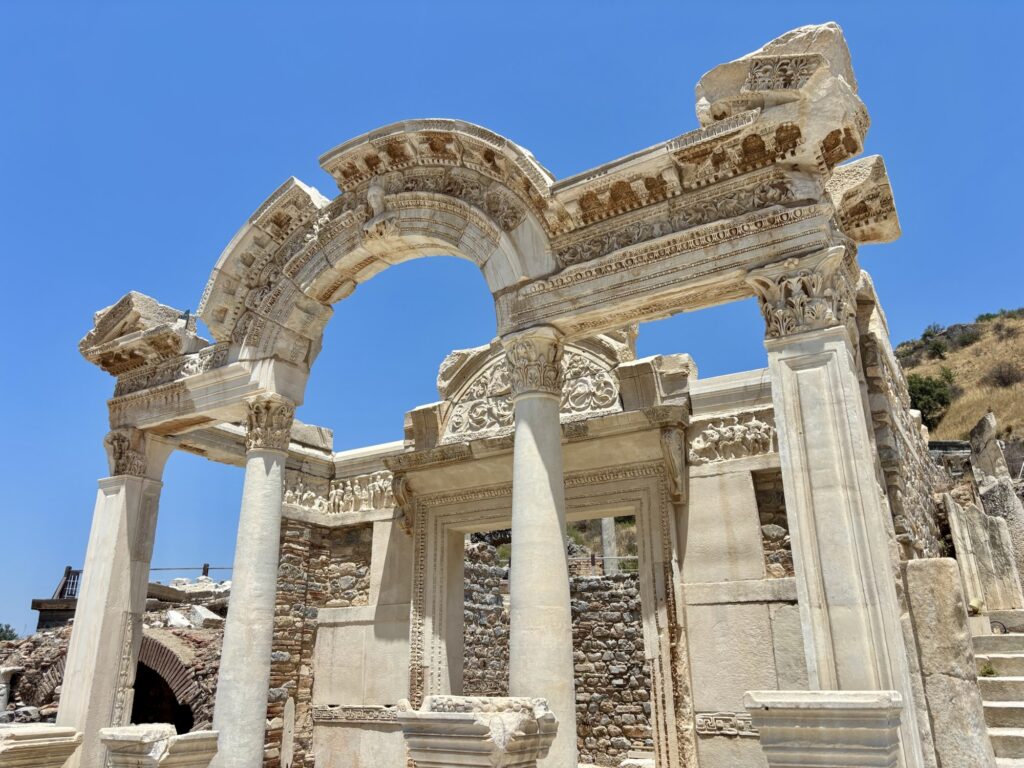
The facade of the temple has four Corinthian columns supporting a curved arch. The ouster two columns are square.
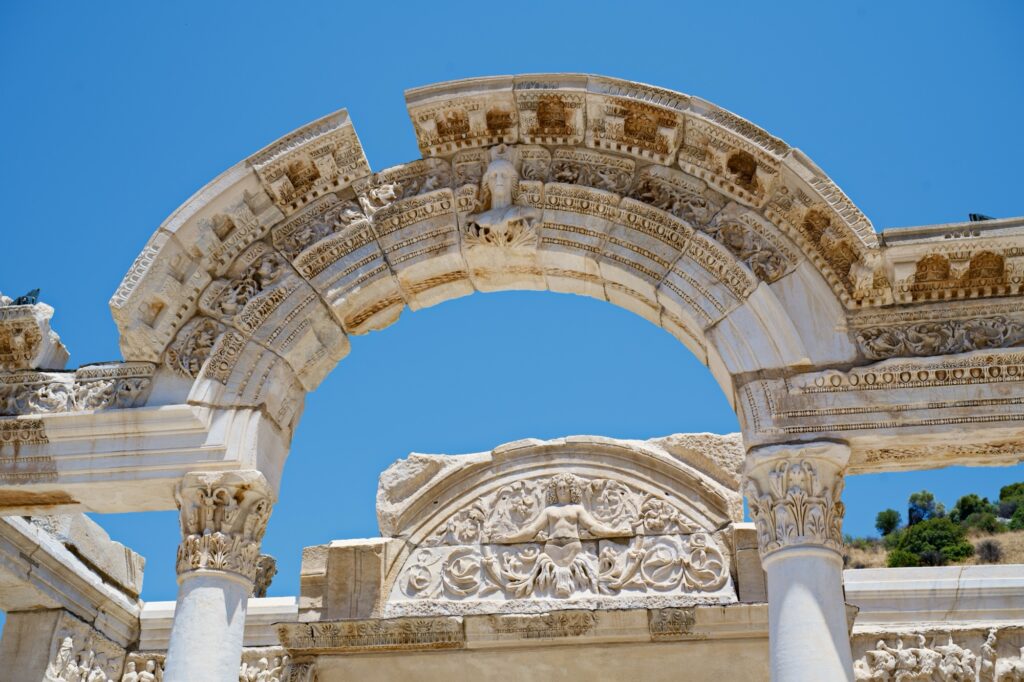
A relief of the goddess Tyche is in the middle of the arch. Inside the temple was a relief of Medusa above the door.
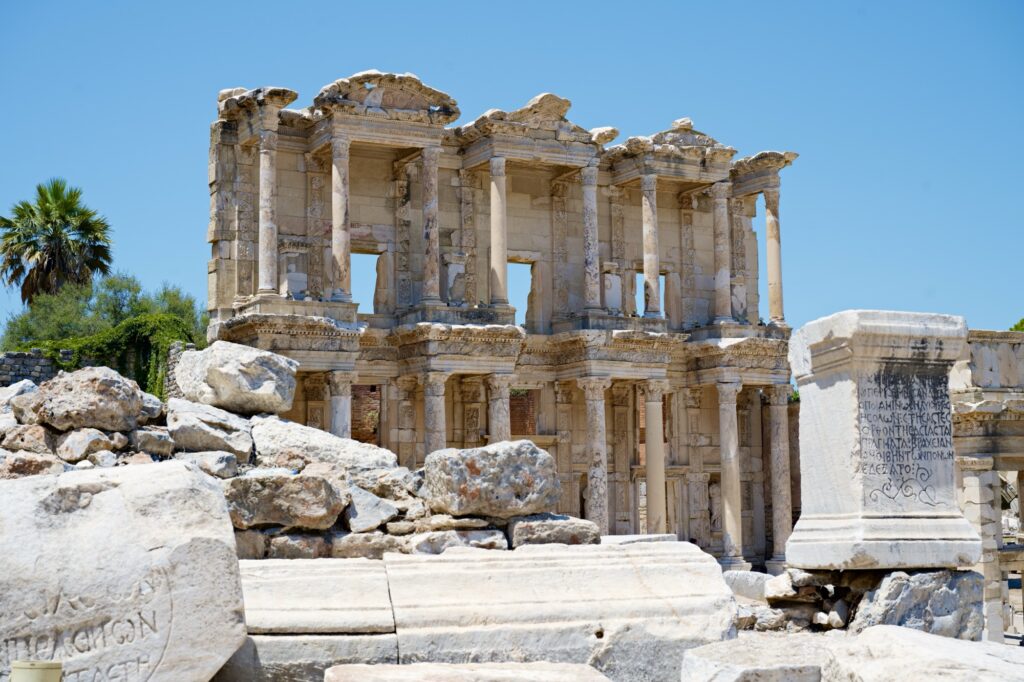
At the end of Curetes Street is the incredible facade of the Library of Celsius.
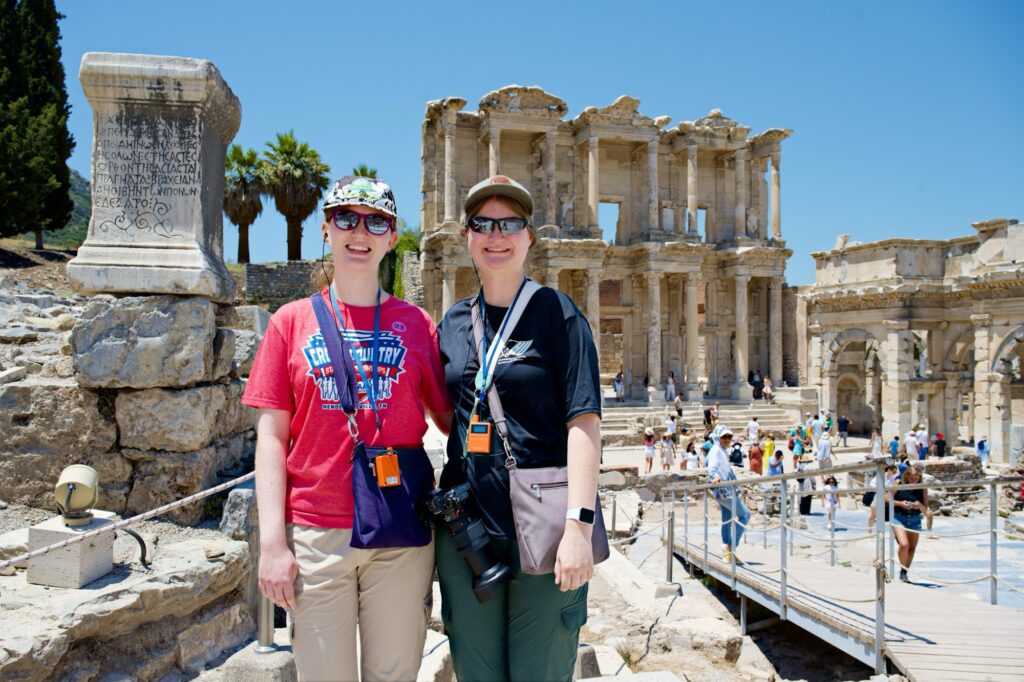
This was the third largest library in the Roman Empire. It was finished during reign of Hadrian in the early 2nd century AD.
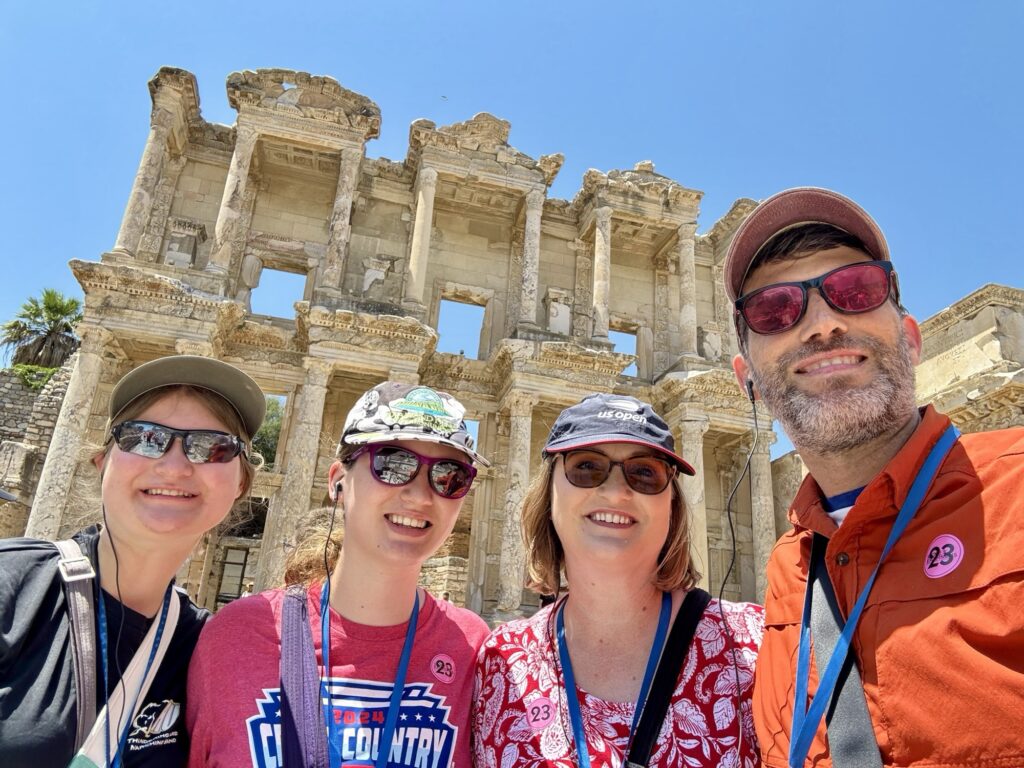
This building is seriously impressive, and was one of the highlights of the day.
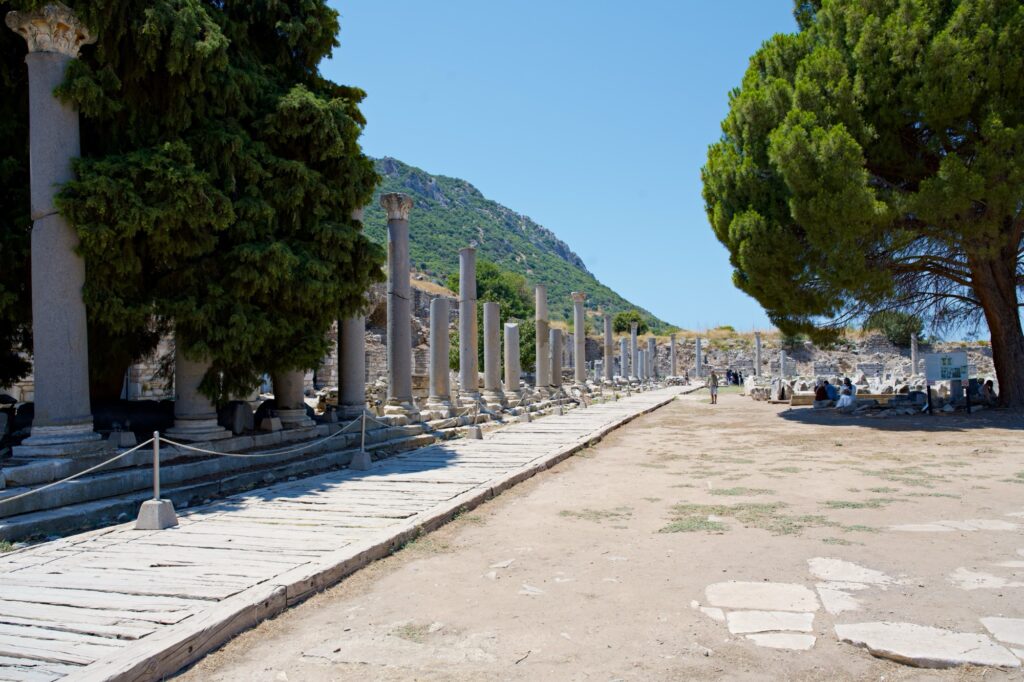
Next we went into the commercial Agora, which contained the remains of many shots with columns supporting the porticos out front. In the agora, Yusuf began to talk about Paul’s time in Ephesus. He stated that Paul would have had a tent shop in the agora to make a living during his time there since he was a tentmaker (Acts 18:3). While this is certainly possible, we have no way of definitively knowing this. However, the agora would have been present during both of Paul’s visits to Ephesus (see above).
In addition to what I’ve already noted about Paul’s visits to Ephesus above, Yusuf told the group about visits by the Apostle John to Ephesus. The story goes that after Jesus entrusted his mother Mary into John’s care (John 19:26-27), John brought her to Ephesus where he began to preach (predating Paul’s visits). At some point, John ran afoul of the Roman authorities and was exiled to Patmos where he wrote the book of Revelation. The story continues that he was eventually released and came back to Ephesus where he died in his 80s. While Yusuf presented all of this as fact, this is not recorded in scripture. It is a traditional view that is based on extra-biblical sources. For example:
*Some early Church fathers, like Irenaeus (late second century AD) and Eusebius of Caesarea (early fourth century AD), mentioned John’s presence in Ephesus.
*Synodal Letter of the Council of Ephesus (431 AD): This letter is considered the earliest written document explicitly linking Mary to Ephesus. It refers to the city as the place where both John and Mary lived and were buried.
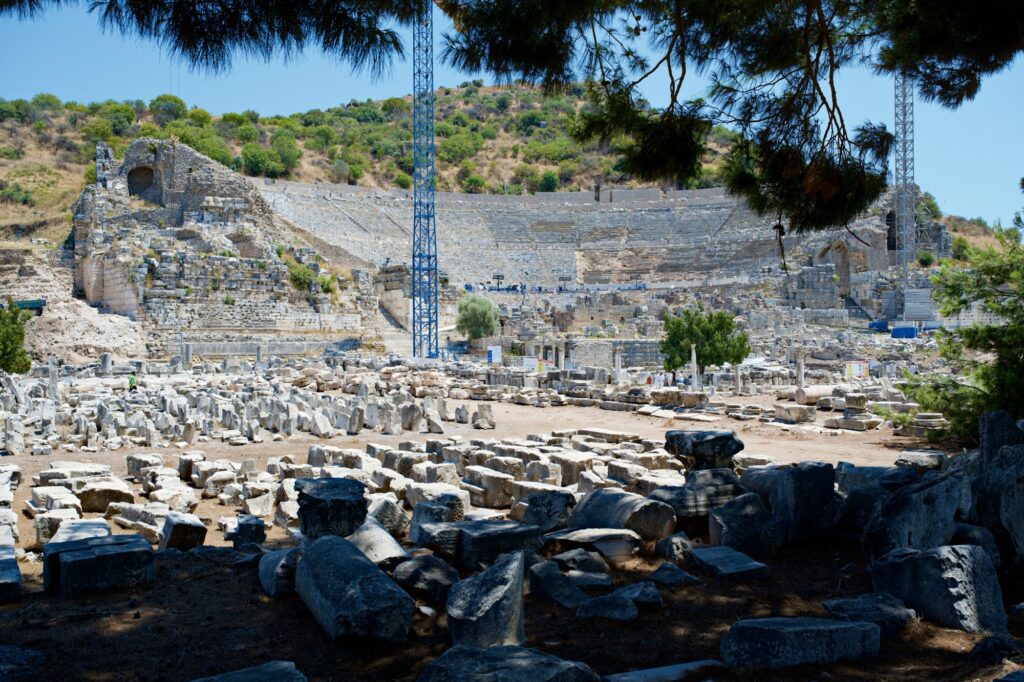
Now back to our tour…our final stop was the Great Theater, which seated 24,000 people and was the largest in the Roman Empire. This theater began in the Hellenistic period, but was expanded by Roman Emperors Claudius and Nero in the mid first-century AD. This is almost certainly the theater mentioned in Acts 19 (noted above) where the crowd rushed during the riot instigated by Demetrius.
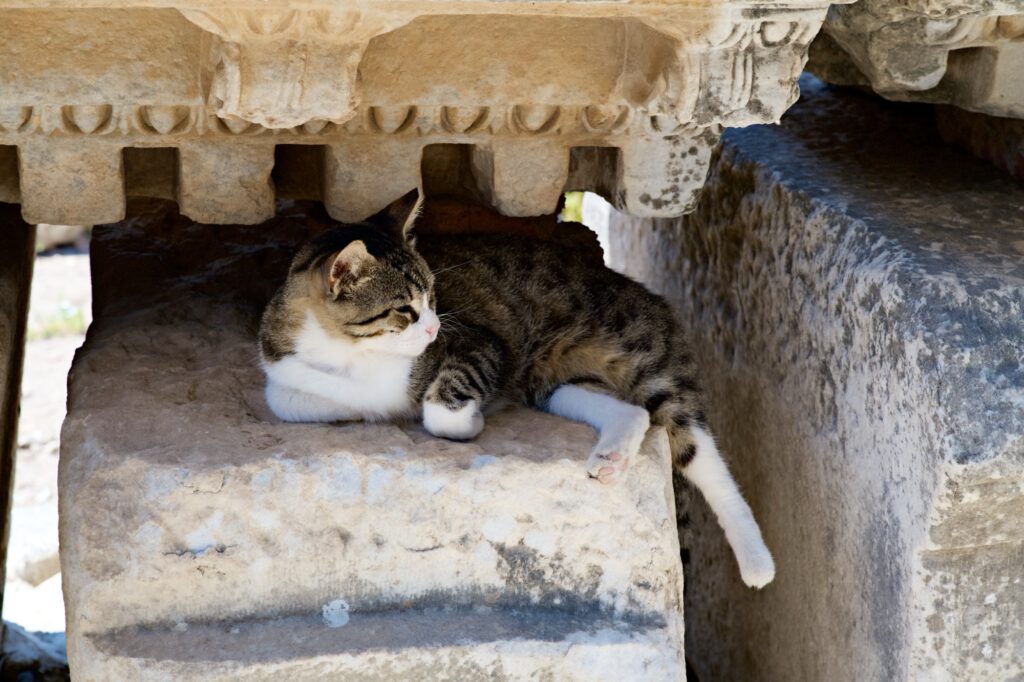
On a side note, we saw another feral cat just outside of the theater.
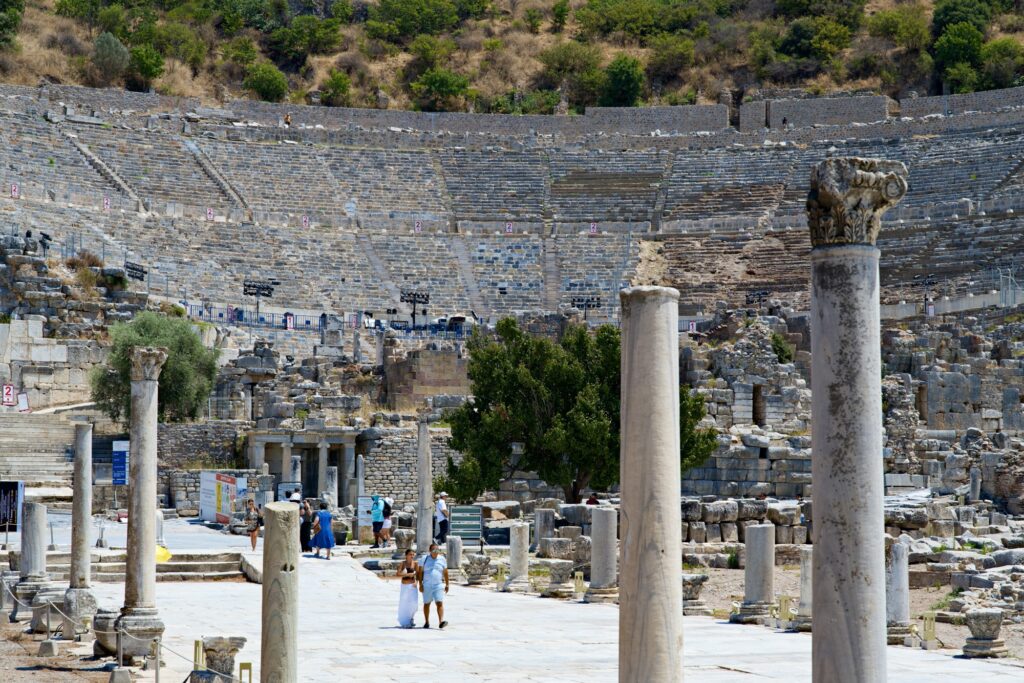
Even though we were not allowed to enter the theater due to reinforcement work that is being done, we could tell that it is gigantic. I tried to spend some time just imagining the crowd rushing in here and chanting “Great is Artemis of the Ephesians!” This was definitely the highlight of the day for me, especially considering the events that happened here and were recorded in Acts 19.
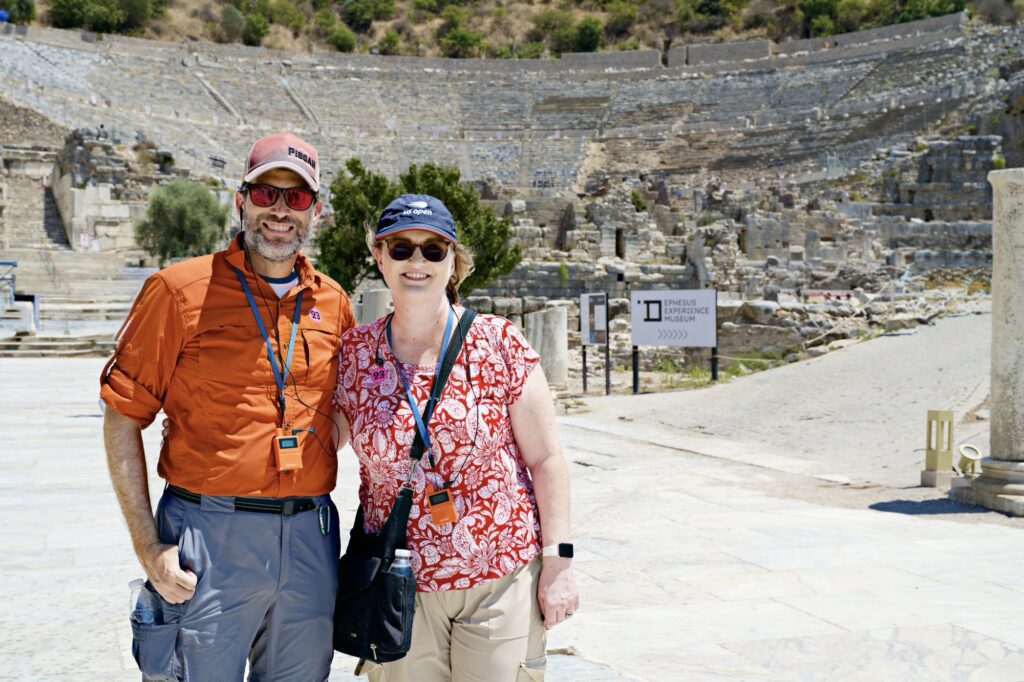
We spent some time walking around as much of the theater as we could and noted the four vomitorium used to enter and exit the theater. We took a bunch of pictures before leaving the site. After getting on the bus, we were able to see the theater from a significant way down the road because of its great size. Just amazing!
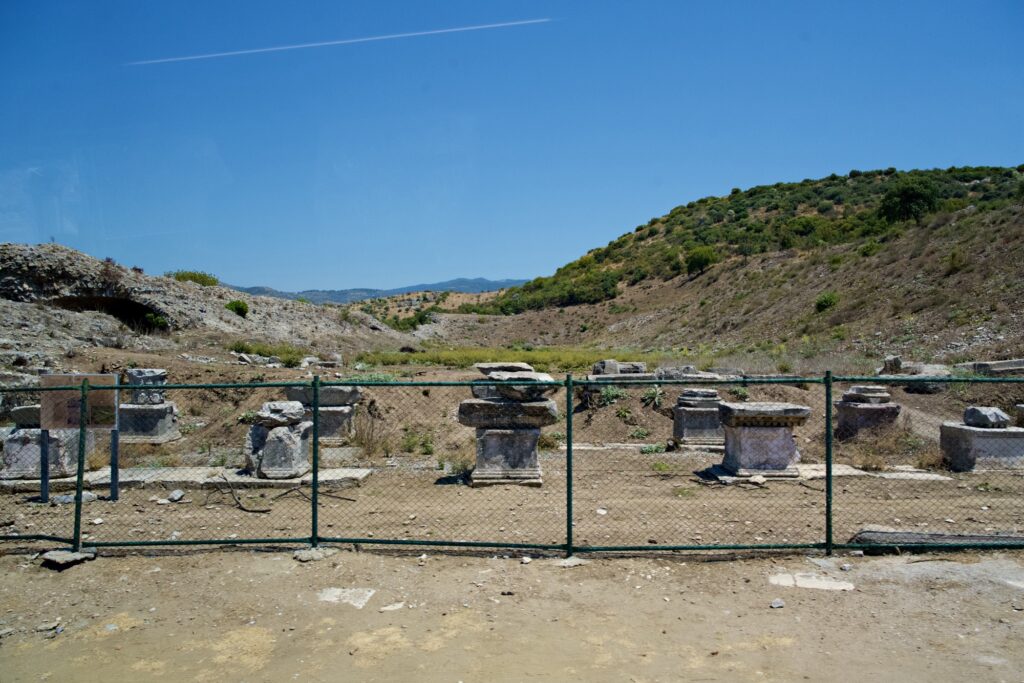
We did see one last thing from the bus before leaving Ephesus. I mentioned above that only 25% of Ephesus is excavated. From the road, we were able to see the stadium of Ephesus that has not yet been uncovered (you could see the shape in ground). A few seats from the stadium were sitting on top.
Pine Bay Hotel
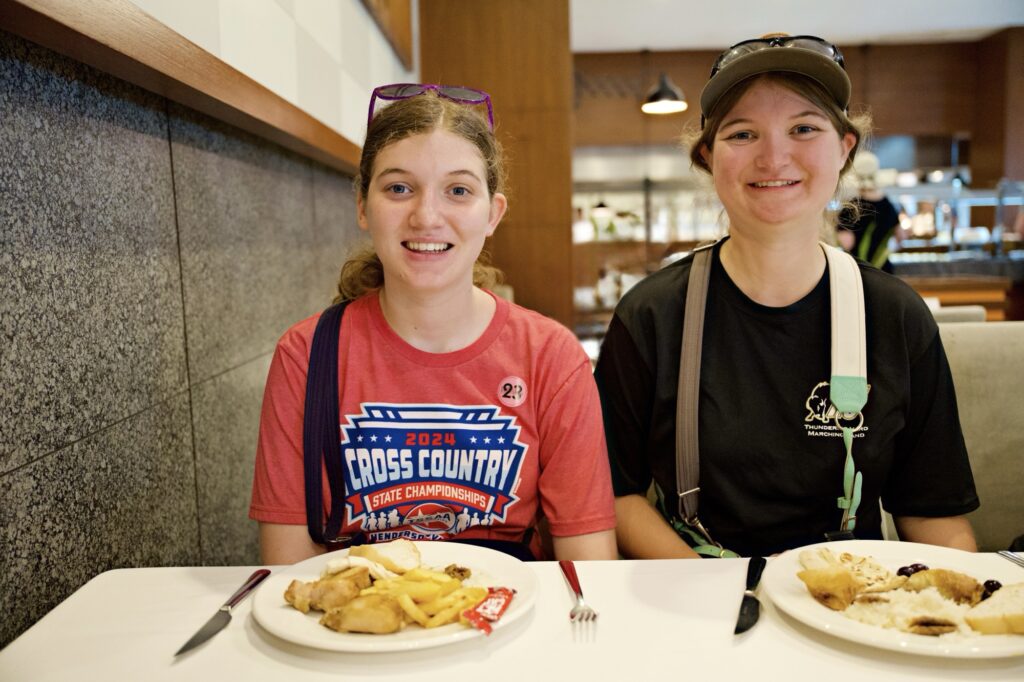
After leaving Ephesus, we headed back to the Aegean coast and to the Pine Bay Hotel for a buffet lunch. It reminded me very much of dinners in Israel at the hotels. We all sampled various kinds of dishes that were wonderful.
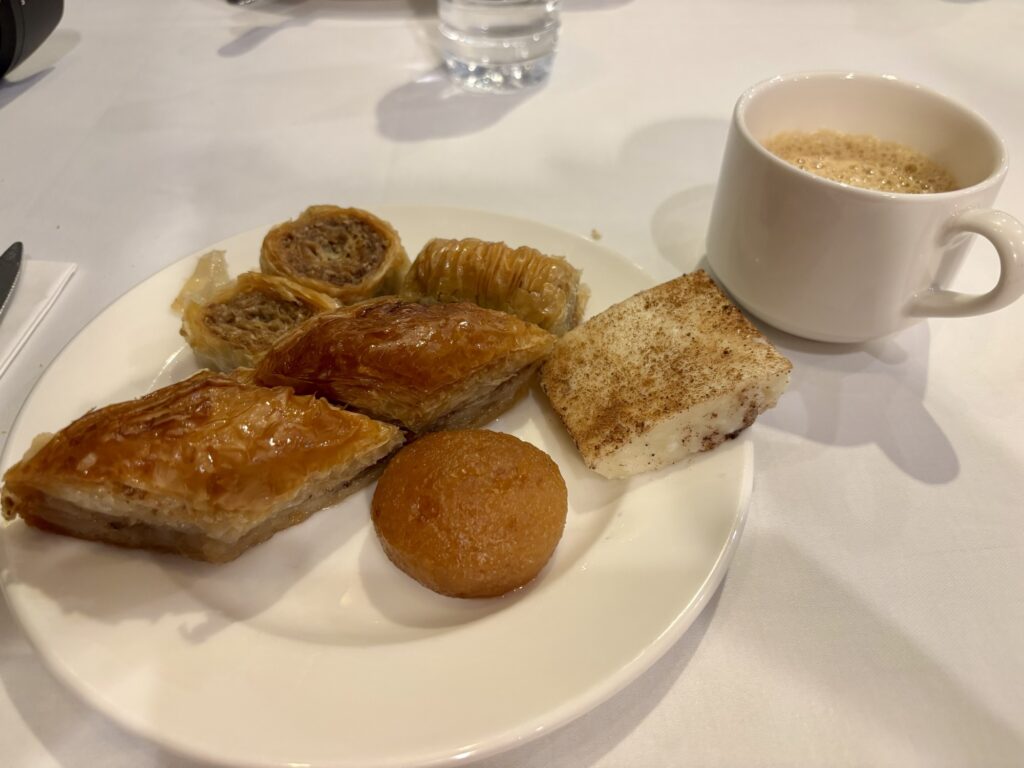
We also tried their Baklava and other desserts. Later Yusuf said that Baklava was originally from Lebanon instead of Greece or Turkey. I also had some Turkish coffee. Yusuf said that the beans are not from Turkey but are imported while they are still green. They are then double roasted to make Turkish coffee.
After lunch, we were walking through the hotel I was stopped by hotel’s photographer who saw my camera and wanted to chat. We talked and compared camera gear for about 10 minutes and then he took me to the photography area and showed me some of his work. He is a really good photographer.
When we stepped outside to wait for the bus, you could hear a buzzing sound all around that sounded like the cicadas we get back home. I asked Yusuf about this and indeed they also have cicadas. I saw one and it looked exactly the same (was not able to get a picture).
Kusadasi
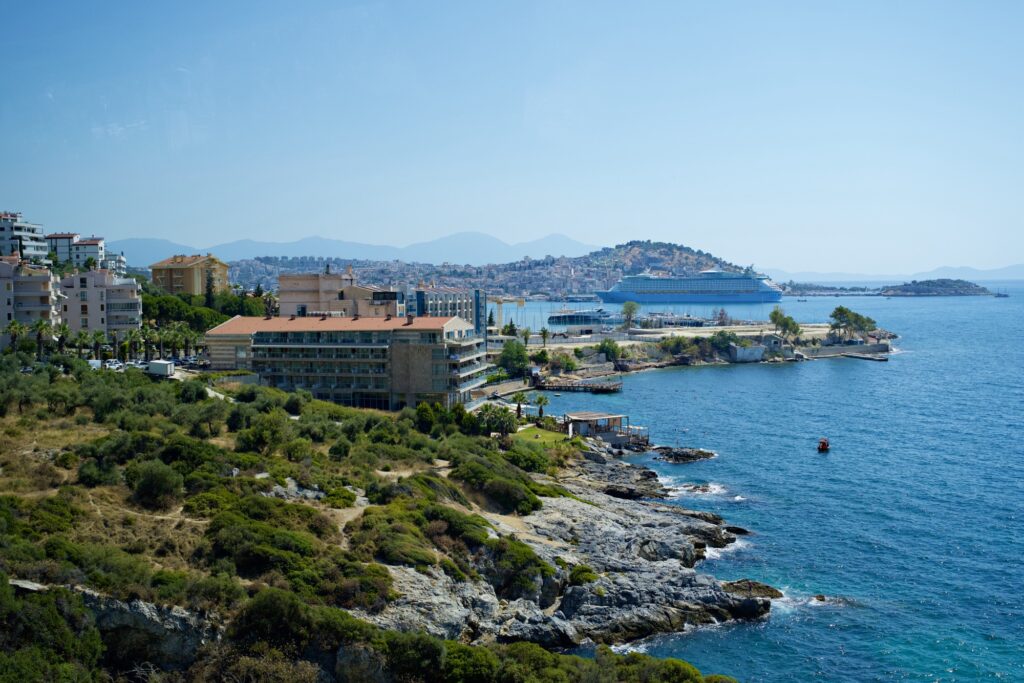
Back in Kusadasi, our final stop was in the bazaar and a rug co-op for a demonstration on the making of Turkish rugs.
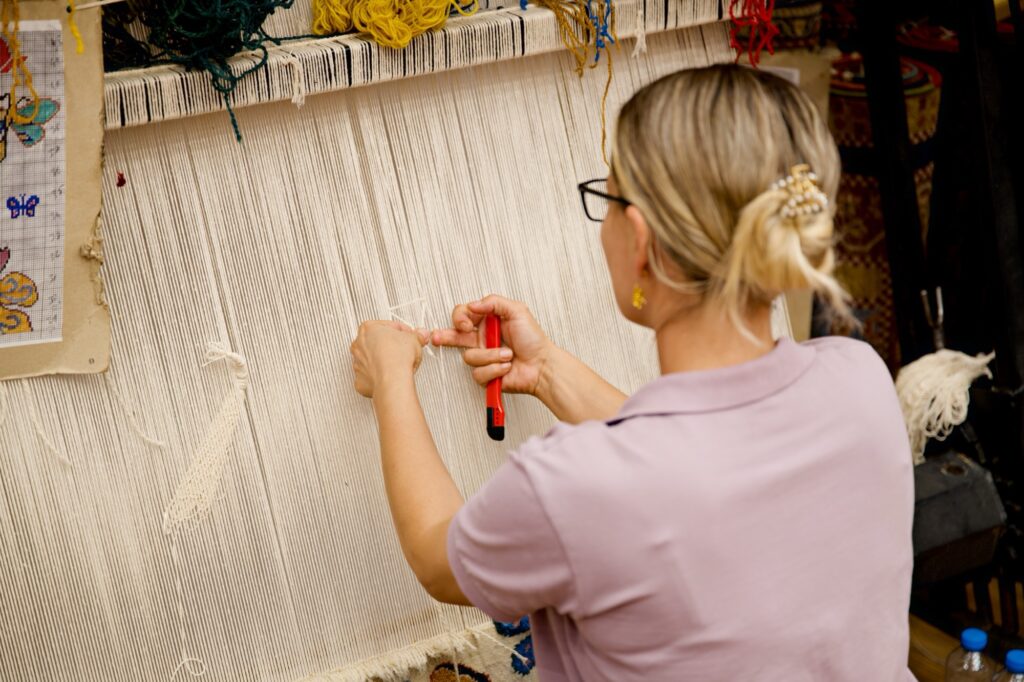
The demonstration was very interesting and the showed us two women who were weaving using a double knot, which is unique to Turkish Rugs. He explained that Turkish rugs are all handmade with simple dyes and no chemicals using hand spun yarn. He said that a 6’ x 9’ would take a single craftsman 4.5 months to complete.
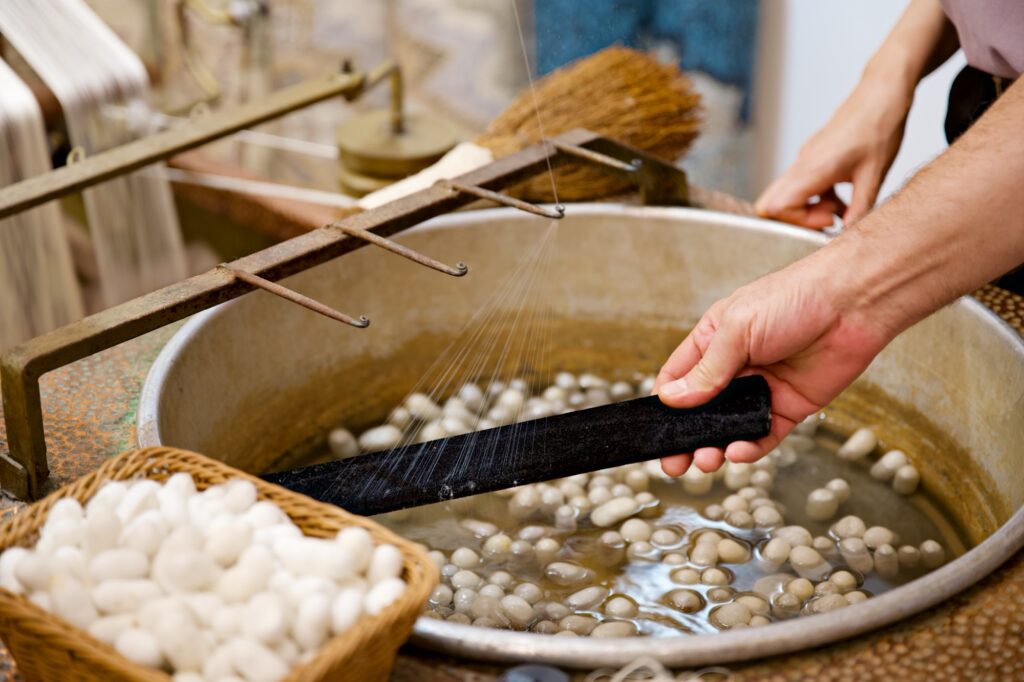
Next he showed us how silk yarn is made starting with the butterfly cocoons. A single silk thread is extracted from the cocoon that can be up to 1900 meters long. However kt takes 1600 threads to make a silk fiber.
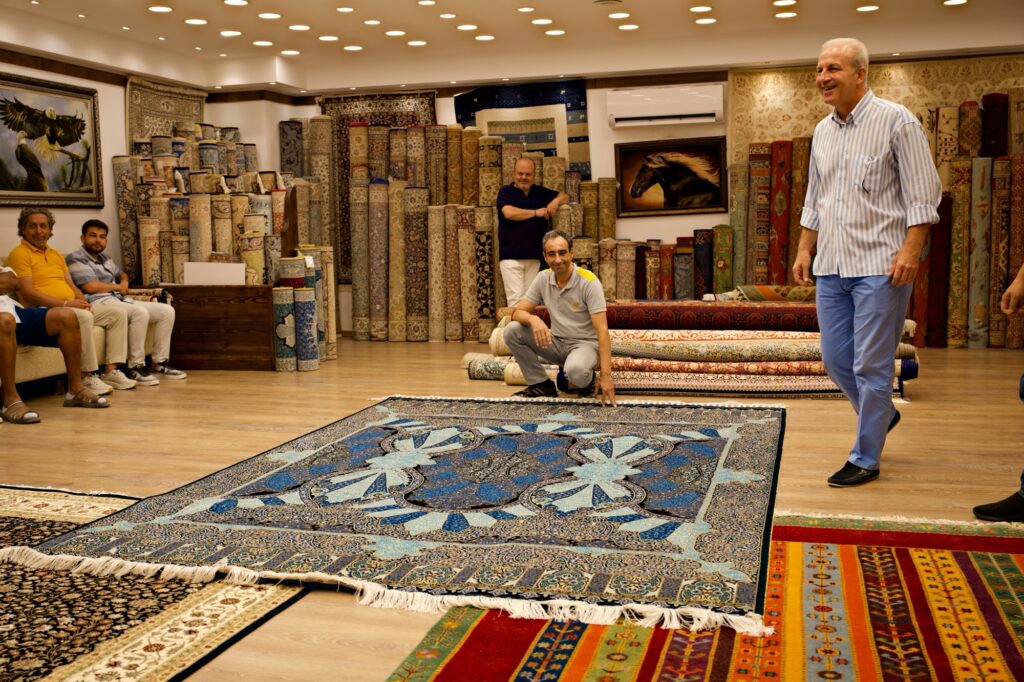
Next he took us to another room and showed us numerous examples of finished rugs. Some of them would even change color as they were turned. After the presentation, the sales people descended on us like vultures. I knew this was coming but it was still very uncomfortable and we got out of there as quickly as we could.
Voyager of the Seas
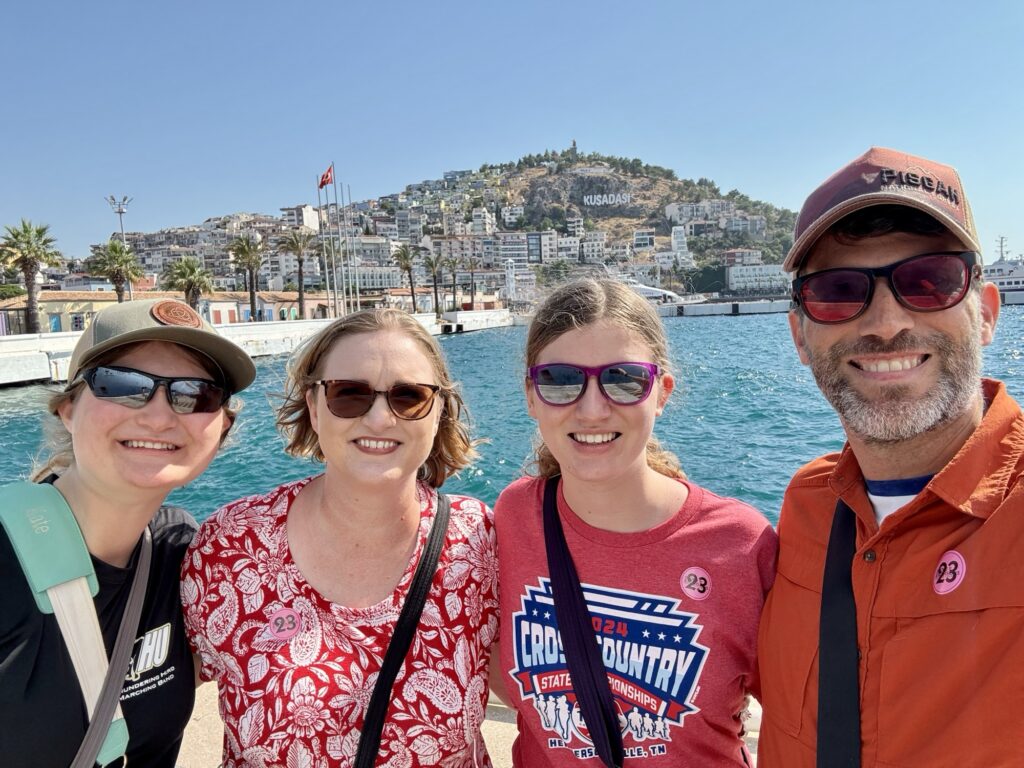
From there we headed back to ship to clean up before dinner.
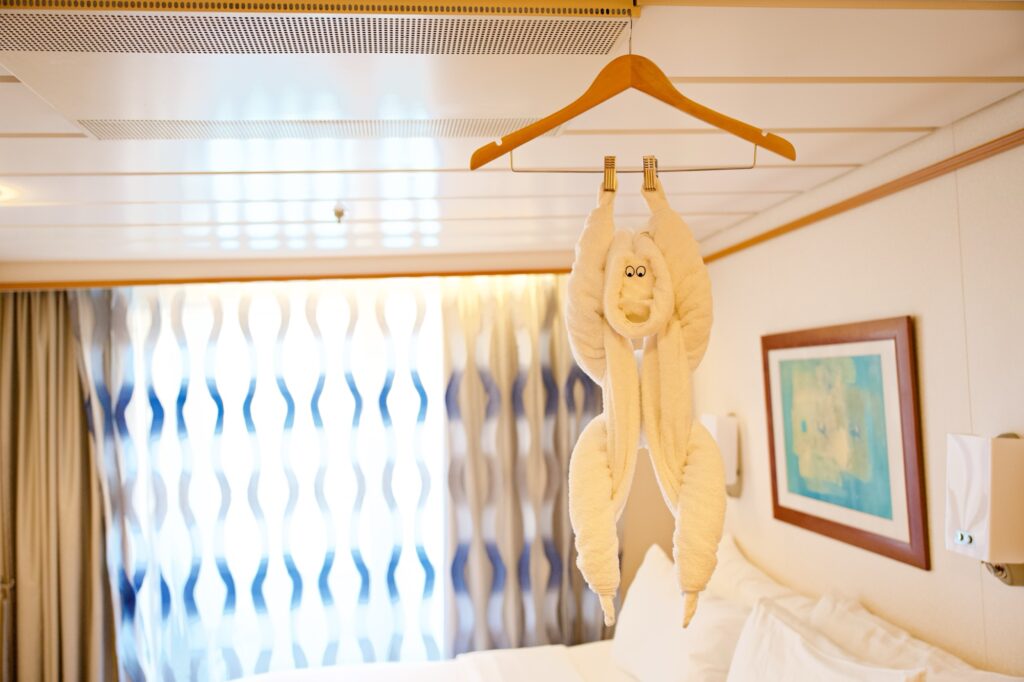
When we got to the room, we found that Amron had left us another towel animal. This time it was a monkey!!
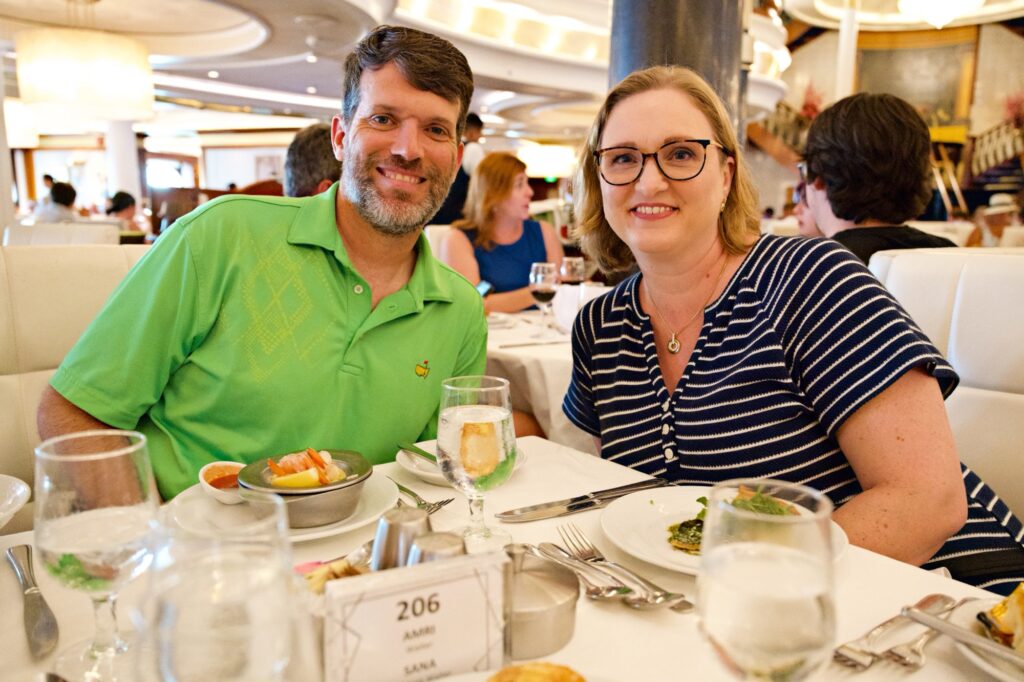
We again ate in the Main Dining room at a table served by Amri and Sana. Tonight Sana told us a little about his home country of Gambia and Amri talked to us about his history with Royal Caribbean. He has been working with them since 2016 and still has four months left on his current contract.
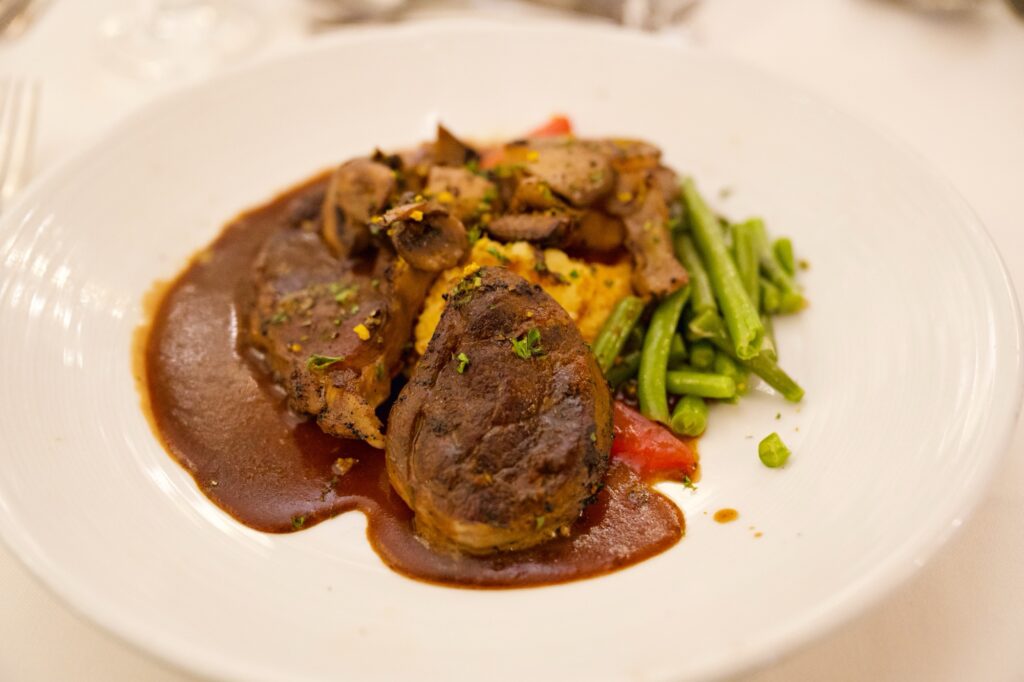
For dinner, the theme was Mediterranean. I had a greek salad, shrimp cocktail, occo bucco, and hazelnut chocolate cake. It was all very good.
After dinner we went to the Royal Theater for their Music in Pictures show before turning in for the night after a long and adventurous day!
